a l a b r e v e

O ctober/November 2014 www.alabamamea.org Conference Issue
the official publication of the Alabama Music Educators Association
Piano and Voice Brass, Percussion, Strings, and Woodwinds









































































Advertisers Index American College of Musicians...............18 Arts Music Shop, Inc..................back cover AU Music Department...............................2 AWB/Wayne Broom.................................42 Gadsden Music Company.........................16 Huntingdon College Bands.......................62 Jacksonville State University....................35 John M. Long School of Music (Troy).......8 Join NAfME/AMEA.................................15 NAfME Broader Minded..........................14 NAfME Collegiate ...................................25 QuaverMusic.com.....................................20 RowLoff Productions................................11 Samford University School of the Arts.....36 Smoky Mountain Music Festival................6 Troy Graduate Studies..............................30 UA Bands..................................................63 UAB Music...............................................60 UNA Department of Music.......................45 University of Montevallo..........................19 University of South Alabama Bands........49 University of South Alabama Music........57 Vanderbilt Universtiy Blair SOM.............13 Yamaha.......................................................5 the official publication of the Alabama Music Educators Association October/November 2014 ala breve ala breve 2015 AMEA In-Service Conference... 22 31 31 32 37 Features... 43 47 52 54 61 6....................President 9 .................Collegiate 10.........................HED 13..........................AVA 14............................AOA 17..........................ABA 21...................Elem/Gen 51...Campus Connections 50........Industry Members 51..........Meeting Minutes 56............................Jazz 56...................Research 58.....Schedule of Events ala breve 3 Programming for Band: The Continuing Quest for Quality and “Fit” by Rodney Dorsey Clinicians Performing Groups Hotels Schedule Quick Facts Your Mentors Are For Life by Virginia Wayman Davis Music Literacy and Language Literacy: Parallel Connections by Shelly
Orchestra as a Vehicle for Social Change: Providing Opportunities and Teaching Perseverance by Rebecca McLoed Capturing Our History: What You Can Do To Help by Frank Buck 12......2015 AMEA In-Service Conference Pre-Registration Form 46.......................................................FAME Registration Form Departments... Forms...
Cooper
President Carl Hancock University of Alabama Box 870366 Tuscaloosa, AL 35487 (205) 348-6335 chancock@bama.ua.edu
President, ABA Rusty SmithsCourson Station High School P.O. Box 253 Smiths Station, AL 36877 (334) 664-4435 courson.rusty@lee.k12.al.us

















Past President Sara GreystoneWomackElementary School 300 Village Birmingham,Street AL 35242 (205) 439-3200 saratwomack@gmail.com

President-Elect Susan Smith Saint James School 6010 Vaughn Road Montgomery, AL 36116 ssmith@stjweb.org
Executive Director Editor, Ala Breve Garry Taylor 1600 Manor Dr. NE Cullman, AL 35055 (256) 636-2754 amea@bellsouth.net









President, AOA Sarah Schrader 320 Lee Rd. 23 Auburn, AL 36830 (334) 728-2855 burkart_sarah@yahoo.com
















Treasurer/RegistrarPat POAMEAStegallRegistration Box 3385 Muscle Shoals, AL pstegall@mscs.k12.al.us35661

Recording Secretary Carla Gallahan 212 Smith Hall, Troy University Troy, AL 36082 (334) 670-3502 School cgallahan@troy.edu















President, AVA

Carl Davis Decatur High School 1011 Prospect Drive Decatur, AL 35601 (256) 559-0407
carlbethemeryellen@gmail.com













Industry Representative Becky Lightfoot Arts Music Shop 3030 East Blvd. Montgomery, AL 36116 334/271-2787



beckyl@artsmusicshop.com
AMEA Collegiate Advisor Ted UnivesityHoffman of Montevallo Station 6670 Davis Music Building 308 Montevallo, AL 35115 (205) 665-6668
ehoffman@montevallo.edu
President, Higher Education James Zingara UAB 231 Hulsey Center Birmingham, AL 35294 (205) 934-7376 jzingara@uab.edu



President, AMEA Collegiate Stacy UniversityDaniels of Montevallo (205) 215-8768
sdaniel4@forum.montevallo.edu
President, Elem/Gen Karla Hodges Rock Quarry Elementary 2000 Rock Quarry Dr. Tuscaloosa, AL 35406 (205) 759-8347

karlahodges@gmail.com
Unless otherwise indicated, permission is granted to NAfME members to reprint articles for educational purposes. Opinions expressed in this publication are not necessarily those of AMEA or the Editor. All announcements & submissions are subject to editorial judgement/revision.The Alabama Music Educators Association is a state unit of NAfME: The National Association for Music Education, a voluntary, nonprofit organization representing all phases of music education in schools, colleges, universities, and teacher-education institutions. Active NAfME/AMEA membership is open to all persons engaged in music teaching or other music education work.







Ala Breve is published four times a year (August, October, February & May) by the Alabama Music Educators Association. Subscription for members is $4.00 per year as part of annual NAfME/AMEA dues. Subscriptions for non-members is $15.00 per year. Bulk rate postage paid at Dothan, AL. Garry
Winter
Spring
Taylor, Editor & Advertising Manager 1600 Manor Dr. NE Cullman, AL 35055 (256) 636-2754 amea@bellsouth.net ADVERTISING & COPY DEADLINES Fall - August/September (Back to School) issue: July 15
- October/November (Conference) issue: September 15
- February/March (All-State) issue: January 15 Summer - May/June (Digital Only) issue: April 15
AMEA Governing Board 2014-2015
4 October/November 2014
On the cover David from Cullman Middle School
Photo by Courtney Ferguson
Starting October 1, 2014, visit the Yamaha Wind Instruments Facebook page to enter and participate in the Yamaha Silence is Golden Sweepstakes for a chance to win a 5-day, 4-night trip for 2 to Southern California the week of January 21-25, 2015!

Prizes include:
– Airfare and luxury hotel accommodations

– A day trip to the Yamaha Los Angeles Atelier – Passes to the 2015 NAMM show
– AND MORE…
Scan this QR code to connect with Yamaha Wind Instruments on Facebook 4wrd.it/SGSAAB
Moving forward through reflection and vision!
Dear Friends and Colleagues,
I want to take a moment to update you on the incredible progress the AMEA Governing Board has made toward passing the Four Milestones I laid out in my August column and share some thoughts about our upcoming professional development conference. Before I do, I want you to know that I am very impressed with our division presidents, president-elects, and executive officers. They have shown remarkable enthusiasm for improving music education in Alabama, and are working very hard to host an excellent conference this January.
I have a lot of good news to share. So let's get started!
THE 2015 INSERVICE CONFERENCE


Background thoughts to ponder
Participating in professional development is something Alabama music educators do better
than teachers in any other discipline. For instance, 96% of us belong to at least one professional music organization, 83% of us attend at least one conference per year, and an amazing 65% of us invested our time and savings to earn an advanced degree.1 So why are we so involved in PD? Research on professional development clearly supports music educators have a keen sense of what we want from our professional development; we expect to learn from our peers, attend relevant experiences, acquire new skills, and forge mutually beneficial professional relationships.
Evidence is not just embedded in research and numbers. I believe it is also because we recognize what we want and are drawn to opportunities to learn. After all, our field is very complex, so we know there is much we can glean from each other. When I hear speeches about the latest “reform du jour,”2 I am always surprised to learn the education profession has just now figured out that teachers prefer to learn from peers, only attend inservice that is relevant,3 desire assessments from a mentoring teacher, and need opportunities to connect with colleagues in the same content area. Sometimes I just want to say, "it's about time the rest of you figured out what we've known for years."
Inservice conference highlights
An educational festival for elementary, middle, and high school students in band, choir, and orchestra
www.SMMFestival.com

or call:1-855-766-3008
Another consideration is that our careers were forged in ensemble participation, so we desire PD opportunities that bring us together. Think about this…during our undergraduate years (and before), we sing in large ensembles, march with hundreds of colleagues, and perform in unison under the baton of a maestro. Music participation is a social activity, and so it stands to reason we enjoy returning to groups for fellowship and mentoring.
At the same time, we need to acknowledge that attending a state conference is akin to taking part in our cultural heritage. Music educators reconnect with a large community of like-minded professionals and share stories of triumphs and struggles. We applaud our heroes and celebrate the accomplishments of our friends. It seems state conference attendance is valued not just for content, but also for the opportunity to revive old days.4
As your President, I am very pleased with the steps the AMEA Governing Board has taken toward planning a great professional development experience for you. We are hosting many excellent ensembles and clinicians this year. However, I want to spotlight a couple of headliners we purposefully invited to meet our strategic goal of ramping up the professional in professional development. For starters, Dr. Robert Duke from the University of Texas will be here to make mind-blowing connections between our practice and what is happening in contemporary research; Dr. Deborah Confredo (formerly Sheldon) from Temple University will direct our first publishersponsored reading band; Dr. Tucker Biddlecombe from Vanderbilt University will present three hand-picked sessions dedicated to choral pedagogy; and Dr. John Feierabend from the University of Hartford, who is no stranger to Alabama, will come to make sure we all have a good time! Seriously, he will make you feel like a kid again as he transforms music fundamentals into pure fun. And finally, due to the incredible leadership provided by Dr. Sue Samuels and members of the College Band Directors National Association, the Intercollegiate Band will return to Montgomery, under the baton of Colonel John R. Bourgeois, Director Emeritus of the United States Marine Band, "The President's Own."
And that is just the beginning. Many of our friends and colleagues are preparing to perform and present sessions that will make you proud to be a music educator. I encourage you to read the schedule in this issue and make plans to attend the 2015 AMEA Inservice Conference. Convenient online registration is available thanks to our Executive Director, Garry Taylor. Visit http://tinyurl.com/2015AMEA
MILESTONE PROGRESS REPORT
First Milestone: Establish connections with nationally recognized teachers, scholars, organizations, and researchers to advance the quality of in-service learning.
My report: I think we are making excellent progress toward passing the first milestone.

6 October/November 2014
Carl Hancock AMEA President
Below I describe what has been accomplished and issue grades on our progress. Let’s see if your scores match mine.
Professional Outreach. In the August issue of the Ala Breve, we featured an advocacy article written by Edward Lisk (New York). His contribution was the first of 14 original articles we plan to publish by accomplished and rising stars in the field. In this issue, we have four articles written by authors from across the US. Dr. Rebecca Macleod (U. North Carolina) describes how participating in an orchestra can serve as a vehicle for social change, teach discipline and perseverance, as well as enrich the lives of all students. Dr. Rodney Dorsey (U. Oregon) shares several considerations directors should make when programming for concert bands and provides a list of recommended pieces to explore. Dr. Shelly Cooper (U. Arizona) explores the connections between music and language literacy using the lens of Brain-Targeted Teaching and provides an illustrative general music lesson to try in the classroom. And finally, Dr. Virginia Davis (U. Texas Pan American) describes the phases of student mentorship and how teachers are critical to the process. In February 2015, the Ala Breve will include contributions from four different authors (a choral article is coming folks, so stay-tuned). Grade: “A”
Special Clinicians Fund. At our June Governing Board Meeting, a special fund was created for the AVA and ABA to secure two nationally recognized clinicians for the upcoming conference. I am pleased to report the Alabama Vocal Association, under the leadership of Dr. Carl Davis, secured Dr. Tucker Biddlecombe (Vanderbilt U.) for the 2015 conference and scheduled three sessions with this master teacher. Details about Dr. Biddlecombe can be found in the conference program section of this issue. Grade: “B”
Industry Connections. I am very excited to report that the current number of Industry members is up by 29% when compared with June 2014. Industry connections began under the leadership of Past-president Dr. Sara Womack and are tended to by our Executive Director, Garry Taylor. Grade: “A”
Collegiate Connections. I am pleased to report that we added two new efforts to connect with College and University faculty. First, to directly engage faculty in the professional development of Alabama Music Teachers, Dr. Erin Colwitz (choral) and Dr. David Ragsdale (band) volunteered to serve as Music
Reviewers for the Association. They agreed to review at least 25 pieces over the next year and will contribute a regular music review column to the Ala Breve beginning this February. Second, Dr. Ellary Draper (music therapy) volunteered to serve as the Chair of the Multicultural and Special Education Committee. In this role, Dr. Draper will keep us informed of relevant issues at state and national levels and offer a dedicated inservice session on special education in 2016. Information about Dr. Draper can be found on page 10. Grade: “B”
Research Connections. Dr. Frank Buck was reappointed to the position of AMEA historian. His compilation of state band ratings, concert programs, president biographies, and hall of fame inductees are important pieces of our history. Dr. Buck’s article on page 57 details his upcoming research projects and includes a call for assistance from AMEA members. I encourage everyone, especially retired members and graduate students, to lend a helping hand. Grade: “A”
Research Connections. Danielle Todd presented the results of her study on the contents of AMEA inservice conference from 1984 to 2014 at the August Governing Board Meeting. Her research revealed several unique trends and areas in need of attention. For example, she found the proportion of performances by middle school and community ensembles were significantly lower than those by high school groups since the inception of the conference. She also found that clinic sessions covering special and multicultural education issues were rarely available to Alabama music educators. Results of the study influenced some of our long-term plans for the 2016 conference and supported the creation of our new multicultural and special education committee. Grade: “A”
Milestone 2: Escalate advocacy by directly engaging members of our state legislature through data driven arguments and solutions.
My report: I think we are making good progress toward preparing our Association to pass the second milestone. So, let’s take a look at what we’ve accomplished since June.
Music Education Rally in Montgomery. A clear plan is coming into focus and Susan Smith, AMEA President-elect, outlined a series of benchmarks at our August meeting for hosting an Alabama version of NAfME’s Hill Day in 2016. The day will include a series of
concerts by Alabama bands, choirs, and other groups in front of the state capitol and we will host a press conference to talk about the importance of music education in Alabama. Grade: “In progress”
Non-Member Survey. To build the capacity we need to have a clear voice in Montgomery, we need everyone who is involved in K-College music education in Alabama to advocate for music in our schools. Which means, we need to increase the size of our association by bringing all Alabama music teachers into the fold. Khristina Motley sent me preliminary results from her study on non-members of the AVA, which was presented at the AVA Fall Workshop. Her very insightful interviews with choral educators revealed some of the top barriers to belonging to our association. We are using this information to reach out to our disenfranchised teachers holding long-expired NAfME memberships. Grade: “In progress”
Rebrand the Association Through Logo
Redesign. The governing board is selecting a new logo for the AMEA. Our current logo does not print well on dark backgrounds and when enlarged for printing on banners and other advocacy materials. We will need a flexible logo for our 2016 Music Education Rally in Montgomery and for the business we conduct as an association. We currently have over 25 designs to select from, which were inexpensively created by crowdsourcing our ideas to a team of designers online. Grade: “In progress”
Milestone 3: Enhance communications between our association, members, and school administrators.
My report: Building the capacity to quickly communicate our initiatives and goals is an important part of an effective music advocacy campaign. We are using social media aggressively, which attracted the attention of several high profile educators and organizations. However, we need to get more of our members and eventually music parents involved in our communication infrastructure. Here are a couple of updates representing our excellent progress since June.
Enhance Communication Capacity through Twitter. @ALMusicEd. Since June, we created 454 Tweets about education news, arts advocacy, music festivals, and the music industry. In addition, the AMEA reported “live” from The Future of Public Education
Continued on page 9
ala breve 7

Greetings Collegiate
Members, I hope your semester is off to a great start and that you are growing as a music educator. As all of you, I’m sure, mine has been busy. During the weekend of September 18th-20th I had the pleasure to participate in the 44th Annual Choral Festival of Voices here at the University of Montevallo. The festival is a three day long event which allows middle and high school students to work, side by side, with college students singing a major choral and orchestral work. This year we had the pleasure of singing John Rutter’s Requiem. Our festival is very beneficial to students as it is one of the only experiences they get to sing and perform a major work with orchestra. Festival of Voices is also a great experience for us because it is another opportunity to work with students. Though observations are not always fun, they truly are an eye opening experience, in which you
President’s Report
Continued from page 7
Tour, and our tweets attracted the attention of the ALDOE, national music organizations, school boards, and the editor of an Alabama newspaper. Our followers include state Superintendent, Dr. Tommy Bice, who recently retweeted one of our posts on the importance of music education in schools. Grade: “A”

President’s Travel Budget. In June, we passed a travel allowance for myself and Susan Smith (President-elect) to travel to division meetings throughout the year to solicit feedback directly from AMEA members. So far we’ve visited the August ABA District II band directors meeting in Gadsden and the AVA Fall Workshop in Tuscaloosa. Our October travels include attending the AMEA/AOSA Fall Workshop and the CNAfME Fall Meeting. In the spring semester, we will attend the AOA All-State Festival, the All-State Choir, and two ABA events. Grade: “In progress”
Milestone 4: Elevate efficiency by modifying our governance structure.
My report: We are almost done with the fourth milestone!

Updating Our Strategic Plan. Under the leadership of immediate Past-President, Dr. Sara Womack, our board approved a major
can witness first-hand being in a classroom and working with students. I encourage you to stay involved in events in your own schools as they will serve you well in the future.
Now that we are well into the semester I urge all of you to stay organized and implement effective time management skills. Majoring in music, especially music education, can be overwhelming. From private lessons, core classes, at least three different ensembles, as well as trying to go to the many recitals we enjoy, it can be quite stressful on anyone. If you apply these skills now they are sure to make your teaching a lot less stressful in the future.
I am happy to inform you that we are in the process of installing a NAfME chapter at Jacksonville State University. On September 19th members of the executive board facilitated an interest meeting explaining membership and the benefits of this
revision to our strategic plan. The plan will be voted on by the membership at our January Inservice Conference. See page 18 Grade: “A”
Appoint New Positions to Address the Professional Development Needs of Our Association (Presidential Cabinet). As previously noted, we created and appointed persons to review music. In addition, we appointed a new Special Needs and Multicultural Education chair and created a new Teacher Education Committee. If you are interested in serving the AMEA, we need two members to co-chair our government relations committee. Please email me at alabamamusiceducation@gmail.com. Grade: “B”
Additional Signs of Progress
Ok. So how are we doing? You could take the grades I assigned and calculate a GPA. However, before answering that question, may I suggest you take a look at the minutes from our August Governing Board Meeting on page 51. In it, you will see a series of six motions the Board passed and one we tabled for additional discussion. Each motion is designed to systematically move our association in a direction I think our new members will appreciate and veterans will realize are long overdue. If you agree or disagree, please send me an email with a time and phone number where you can be reached to
organization. Knowing that another chapter is being formed to advocate our passion makes me very excited for the future of music education in Alabama.
Lastly, I encourage all of you to stay involved in your chapter and attend events that are planned specifically for you. On October 11th the University of Montevallo will host the Annual Fall Summit from 4pm8pm. The executive council has scheduled informative and useful sessions from psychology in music education, logistics to running a program, and getting and keeping your job as a music educator. As always, our Facebook page, Alabama NAfMECollegiate is updated regularly for your use. I look forward to seeing you all at the Summit in October.
alabamamusiceducation@gmail.com. I want to listen to your thoughts and ideas.

I want to thank you again for the opportunity to serve as your President. It brings me great pleasure to represent our Association and the State of Alabama.
Carl
References
1Hancock, C. B. & Womack, S. (2013). Music Education in Alabama: Results from the 20122013 Alabama Music Teacher Census (AMEA 2013-001.UPDATE.1). Alabama Music Educators Association. Cullman, AL. Retrieved [September 27, 2014] from http:// www.alabamamea.org.
2The phrase, “reform du jour” was coined by MENC President (1998-2000), Dr. June Hinckley.
3Madsen, C. H., Jr., & Madsen, C. K. (1983). Teaching/Discipline: A positive Approach for Educational Development. Raleigh, N.C.: Contemporary Publishing Company.
4Bush, J. E. (2007). Importance of various professional development opportunities and workshop topics as determined by in-service music teachers. Journal of Music Teacher Education, 16(2), 10-18.

ala breve 9
Stacy Daniels - President, AMEA Collegiate Division
Zingara - President, Higher Education Division




Dear Colleagues,
I hope that the new Fall semester is treating you well. This edition of Ala Breve is dedicated to the annual AMEA Conference in January and I believe that the Higher Education Division is offering a wide assortment of topics as well as being very inclusive to many of our colleagues from around the state. Our shared and/or independent sessions will include three presentations concerning choral music and pedagogy, two pertaining to administration and assessment and one each in the categories of elementary music, conducting and percussion. This year’s HED Clinicians represent a large
cross section of universities from around the state including the University of Montevallo (Dr. Becky Halliday and Dr. Ted Hoffman), The University of Alabama (Dr. Anne Witt and Danielle Todd), The University of Alabama at Birmingham (Dr. Brian Kittredge and Dr. Sue Samuels), the University of Alabama-Huntsville (Dr. Erin Colwitz) the University of North Alabama (Dr. Ian Loeppky) and the University of South Alabama (Dr. Louis Rivera and Matt Greenwood).
It is also my pleasure to announce that we have a fantastic panel session of department chairs (“View from the Chair”) which includes Dr. Sara Lynn Baird (Auburn University), Dr. Kathryn Fouse (Samford University), Dr. Alan Goldspiel (University of Montevallo) and Dr. Charles “Skip” Snead (University of Alabama). The main points of this discussion will revolve around common concerns that impact all HED educators such as tenure, promotion, overloads, salary, assignments, and other factors. I would like to encourage the HED membership to submit





Dr. Frank Buck, AMEA Historian
specific questions and discussion points; you can send these inquiries to our HED e-mail: ameahed@gmail.com
As I mentioned in the August column, the 2015 HED recital will consist of student ensembles led by our HED membership. The idea here is to provide your chamber ensembles with the opportunity to perform at the state conference as a noteworthy and prestigious endeavor. If you would like to have your group perform, please send an e-mail including your proposed program information (title, composer/arranger and movement titles) and personnel list to ameahed@gmail.com by November 1st, 2014.
I am greatly looking forward to the 2015 AMEA Conference and having the opportunity to meet and reunite with my HED colleagues from around the state. Please do not hesitate to write me if you have any questions or ideas concerning the future activities of the Higher Ed Division. In the meantime, please accept my best wishes for a rewarding and successful Fall semester!
AMEA Presidential Appointments
Frank Buck's career began as a middle-level band director. Bandribbons featured both the Goodwyn Jr. High and Pizitz Middle School programs as “Band of the Month” nationally. Pizitz performed at the AMEA Conference and University of Southern Mississippi Instrumental Conductor’s Conference, and was commended in a State House of Representatives Resolution.Dr. Buck is a recipient of the ASBDA-Stanbury Award and NBA “Citation of Excellence.” As a principal, he secured grant funding bringing his school music, art, dance, and drama instruction. He has authored two books and conducts seminars throughout the U.S. and Canada on organization and time management. Appointment acceptance: I enthusiastically accept the appointment as AMEA Historian. Understanding the road which brought us to this point is critical to mapping the future of music education in Alabama. AMEA has produced "giants" on whose shoulders we stand, and their work ethic provides a model to this generation of music educators.
Dr. Ellary Draper, Chair of the Special Education and Multicultural Education Committee
Ellary Draper teaches music therapy courses at the University of Alabama. Prior to her appointment, she taught in inclusive music classes at the elementary and middle school levels and worked as a music therapist for a non-profit clinic in Houston, Texas. Dr. Draper’s research interests are in the areas of children with disabilities, particularly in inclusive music classrooms. She holds degrees from Westminster Choir College of Rider University, Florida State University, and the University of Texas at Austin. Appointment acceptance: Thank you so much! I look forward to serving as the Chair of the Special Education and Multicultural Education Committee. I am excited to work with Alabama music educators to provide a quality music education for all students.
Dr. Edward C. “Ted” Hoffman, III; Chair of the Teacher Education Committee

Dr. Edward C. “Ted” Hoffman, III, is Assistant Professor of Music and Head of Music Education at the University of Montevallo, where he coordinates the undergraduate music education programs, teaches graduate coursework in the Master of Education–Music program, directs the summer Young Musicians’ Camp, and is faculty advisor to the Montevallo chapter of NAfME–Collegiate. Prior to his appointment, Dr. Hoffman taught PreK-8 general music and directed a variety of elementary, middle, and high school vocal and instrumental ensembles. Appointment acceptance: My sincere thanks to AMEA President Dr. Carl Hancock, the AMEA Governing Board, and the AMEA membership for allowing me to serve as Chair of the Teacher Education Committee. I look forward to engaging pre-professional students, practicing music educators, and college faculty from across our state to inform and strengthen our teacher education programs.

Dr. Jane Kuehne, Alabama Research Chair
Dr. Jane Kuehne is Associate Professor of Music Education at Auburn University, where she is beginning her 10th year teaching undergraduate and graduate music education courses. Previously she taught PK-12 music in general, instrumental, and choral areas in Texas. After earning a Ph.D. in music education from Florida State University, she taught at Hartwick College in upstate New York, and then moved to Auburn University in 2005. Her research interests focus on access to music instruction for all students, especially the under served. Appointment acceptance: Thank you. I look forward to serving the AMEA as Research Chair.

10 October/November 2014
James









ala breve 11 1-800-624-8001 • www.rowloff.com CONTACT US TOLL-FREE or ONLINE 1-800-624-8001 • www.rowloff.com Also Available At Your Local Music Dealer Friend us on Facebook! YES! WecansupplytheBoomwhackers® Item #1021 with Row-Loff’s Snare Drummer’s Toolbox and Mallet Player’s Toolbox. For more info and video excerpts, go to: ■ Over 3 hours of DVD Instruction ■ Play-Along Trax & Groove Trax ■ Accessory Percussion Video Tutorials ■ Over 40 pages of additional PDF materials ■ Integrated Solos & Duets for Snare & Mallets A collection of 8 entertaining Boomwhacker® ensembles (Grades II-III) Item #1024 Add these to your collection of ’Sicles packages from Row-Loff! Hear them all at www.RowLoff.com Be on the lookout for Row-Loff’s 2015 Concert Percussion Ensembles... Coming Soon!
PRE-REGISTRATION FORM
AMEA In-Service Conference
January 22-24, 2015
Renaissance Montgomery Hotel at the Convention Center
LAST NAME
FIRST NAME _____________________ (for badge)
NAfME ID#
Please enclose a copy of your card.
Home Address: (City)(State) (Zip)
Email:
Primary Phone:
School Name:
Principal Division:(check only one) ABA AVA ELEM AOA HED COLLEGIATE
Other Division/s Affiliation:(check all that apply) ABA AVA ELEM AOA HED COLLEGIATE
Please tell us if you are:
First Year Teachers
Collegiate Members
Clinician Conductor of a performing group at the conferenceRetired Current Members, Clinicians, Conductors
Pre-Registration $85.00 (On-Site Registration $100.00)
Retired Members Registration Complimentary
Pre-registration $65.00 (On-Site Registration $75.00)
Spouse* or Guest* of AMEA Member Registration $15.00 *may not be a music teacher Name
Pre-Registration $30.00 (On-Site Registration $45.00)
Non-Member Alabama Music Teacher
Pre-Registration $185.00 (On-Site Registration $195.00)
TOTAL AMOUNT PAID $ MAKE CHECKS PAYABLE TO AMEA A fee of $35 will be charged for returned checks No Purchase Orders Accepted. Check or Credit Card Only
To pre-register with a credit card go to www.alabamamea.org through January 8, 2015
Mail form and check by Jan. 8, 2015 to:
AMEA Registration, PO Box 3385, Muscle Shoals, AL 35661
Important: Forms and payment received after Jan. 8 will be held at the registration desk for onsite registration. Do not send forms or payment to the above address after Jan. 8, 2015!
THANK YOU! Your conference packet will be ready at the registration desk in the Renaissance Hotel. Your receipt will be in your packet at the conference. ********************************************************************************************************************************************
Please do not fill in the information below. This is for AMEA bookkeeping ONLY Personal
12 October/November 2014
School
Date:
Check #
Check # Membership verified and payment receipted by:
N Neew w A Addddrreessss! !
I hope your year is off to a fine start. We provided a quality in-service experience at the Fall Workshop. Dr. Rollo Dilworth presented four sessions that addressed the body/instrument, vocal development issues, rehearsal techniques, and literature selection. Watching Dr. Dilworth conduct the University of Alabama Chamber Chorus and listening to his commentary provided an avenue for self-reflection concerning our own rehearsals. We all thank the University of Alabama Music Department for hosting the event. More specifically, I thank Dr. Marvin Latimer and graduate assistant Donna Feretti for facilitating our logistical and technical needs for the sessions. All attendants were given an opportunity, during the in-service, to enter their biographical information on the AVA Membership Database—an activity that will be required next year before you can participate in an AVA event. If you have not registered yet, please go to the AVA website and enter your biographical information. Click the
“Member Enrollment” link on the home page.


Thank you in advance for all the time you are spending in preparation for the upcoming All-State Show Choir and AllState Choir Auditions. The All-State Slide Show that was presented at the Fall Workshop is available on the AVA All State page on the website. Pay special attention to the eligibility of your students when registering them for the particular ensembles. Conductor submitted links to YouTube performances as well as technical instructions of eligibility and part splits are contained in the power point.
Pre-registration is now open for the winter AMEA conference. Dr. Tucker Biddlecombe of Vanderbilt University will present three sessions relevant to all of us, regardless of grade level taught. His sessions will address: communication in the classroom, what we say and how we say it; choosing quality doable masterworks for

your ensembles, the efficacy of literature selection; and a reading session of music selected by Dr. Biddlecombe.

I congratulate all who submitted an application to have ensembles perform at the AMEA conference. So that we may enjoy a greater share of the performances at the conference, a greater number of members must submit for performance. I encourage you to think this year, as concerts approach, of making quality recordings of your ensembles and use them to apply for an AMEA conference performance.
Communication within our organization is important. Interact with your district chairman, communicating with them any needs you have. I look forward to seeing you in Montgomery.
ala breve 13
Carl Davis- President, Alabama Vocal Association
Sarah Schrader - President, Alabama Orchestra Association

Why Do We Teach Music?
Not because we expect you to major in music, not because we expect you to play or sing all your life, not so you can relax, not so you can have fun, but so you will be human, so you will recognize beauty, so you will be closer to an infinite beyond this world, so you will have something to cling to, so you will have more love, more compassion, more gentleness, more good. In short, more LIFE! ~Author Unknown
I am sure you have heard this saying before, but have you ever stopped to think after reading it, what exactly it is that makes you excited about teaching music every day? I have recently have been overjoyed and inspired to see Facebook posts from teachers and students showing why it is amazing that we get to do what we do. There was a post of a 4 year old playing the first line of Twinkle with perfect posture and perfect intonation followed by a huge HAPPY BIRTHDAY TEACHER! There have been many posts of students playing in their spring recitals, some even duets with their teachers, and the mother’s proud comments with the videos. Some teachers post inspirational and hilarious stories from their days and years of teaching, all with exciting undertones that they have molded extraordinary human beings in their classrooms. When reading these posts and this quote, it reminds me that we are in a profession that is amazingly wonderful for us and the students. As you continue on with your school year, remember to be inspired by music and use your talents to form amazing human beings.
To help sustain your inspirational and energetic teaching throughout the school year remember to attend our annual AMEA conference in January. We have a very exciting conference line up for AOA this year. We will have Crystal Plohman, fiddle professor at Vanderbilt University, Suzuki teacher, and Canadian fiddle champion, present methods for incorporating fiddling in our string programs. Thank you J.W. Pepper for sponsoring Crystal’s trip. Rock Quarry Middle School from Tuscaloosa,
Alabama will be our performing group this year. The Tuscaloosa City Schools string program has grown tremendously and accomplished amazing things in the few years it has been around. This school system should serve as a model for us when exploring how to grow an outstanding string program in our schools. I am also delighted that we will have presentations on shifting, rhythm, orchestra classroom technology, classroom management, bass techniques, and an orchestral reading session sponsored by J.W. Pepper. There will be drawings for the music played in the reading session, so don’t miss out! Bring your instruments!
The 2015 All State Orchestra Audition results will be posted on November 17th. Thank you AOA district chairs for your extraordinary work during the audition season. We couldn’t pull this off without you! All registration for the festival will be done online and the deadline for this is December 1st. The actual festival will take place at the University of Alabama in Tuscaloosa on February 12-15th. We look forward to seeing you and the students there. Thank you to all the band teachers who sent students to audition. A Special thanks to the ABA Officers and district chairs for sending the information out to all the band directors in the state. Your help got the word out to many teachers who will have students participating for the first time!
String teachers, now that your students have finished their All State Orchestra auditions, they can look forward to auditioning for UNA’s Honor Orchestra and attending the ASTA Alabama Honor Orchestra Festival. UNA’s Honor Orchestra will take place on UNA’s Campus January 9 and 10, 2015. Auditions for this will take place on November 4, 2014. Please contact Dr. Daniel Stevens at dstevens1@una.edu or go to http://una.edu/shoals-symphony/honororchestra.html for more information. The ASTA Alabama Honor’s Orchestra Festival will be held at the University of Alabama, November 7-9, 2014. No audition is required for this event! For more information on the Honor’s Festival go to www.astabama.org
My list of youth orchestras was incomplete in the last Ala Breve. There is another outstanding youth orchestra in the Birmingham area called MOP (Music Opportunity Program). They have three
orchestra levels, so there is a place for everyone desiring to play in a group. For more information on the program please visit: www.musicopprogram.org.
Thank you for all the work you do to give students more LIFE. We are blessed beyond measure to do something every day that we love and to share it with others to help enrich their lives and make them better for knowing music!
Calendar of events:
All-State Results Posted online...Nov. 17, 2014
All-State Scholarship Application Deadline...December 1, 2014


All-State Festival....Feb. 12-15, 2015

14 October/November 2014
bubbles.™ We know music helps educate the whole student. But now we need you to help us spread the word. The true mission of education lies in shaping the students behind the scores, and “bubble tests” can measure only so much. Visit broaderminded.com now to get started.
Learn what to say and how to share it
Watch the broader minded video
Share your own story
Join the broader minded movement and receive advocacy updates
Order broader minded resources 800-336-3768 www.nafme.org ™
It’s time for everyone to start thinking beyond the
–
–
–
–
–


Rusty Courson - President, Alabama Bandmasters Association

Hopefully everyone has had a productive beginning of school. At this point, thanks to the new football schedule adopted by the AHSAA, some of us are preparing for our sixth football game, which seems really strange to me. With that being stated, I remember very well that when I first started teaching in the late 1980’s, we didn’t start school until late August, yet always had at least one football game before school even started. Despite the rain that we’ve dealt with this year (I know of several of you that have lost MANY rehearsals this year because of the wet stuff), I hope that you’ve been able to adequately prepare your groups as we quickly approach contest season.
I know that you will want to be in attendance for our annual AMEA In-Service Conference this year at the Renaissance Hotel and Conference Center in Montgomery. Our conference will be held on January 22-24, 2015. Please check the conference schedule, found in this edition of the Ala Breve, as we have outstanding bands slated to perform at every level that I know you’ll want to hear. In addition, you should be able to find many clinics that will be helpful as you strive to better yourself as an educator, and your band program as well. Take advantage of this opportunity to earn professional development in OUR academic discipline (and yes…music IS an academic discipline!!!). Go ahead and preregister online ASAP by going to the AMEA website at www.alabamamea.org.
Looking ahead, make sure that you check out the link on our website to our calendar of events, broken down by district. State dates (such as AMEA and All-State) are included as well.
Alabama Bandmasters Association
Legislation 2015-01 Submitted by: Joel Henson
Delete:
Music Performance Assessments will start in February and run through March. Please remember that ONE of your selections must come from the cumulative music list, which has been moved to our new website being developed through our relationship with Dorian Business Systems (aka Charms), which can be found at www.abafest.com. The new cumulative list is VERY functional and is actually searchable. If you haven’t used it yet…go check it out. If you plan to submit a request to play something that is NOT on the cumulative list, please fill out the Request to Perform a Composition NOT on the Cumulative List Form and get it to Mike Holmes no later than January 16, 2015. Note: This is NOT a postmark deadline. He needs to receive this NO LATER than this date. Please DON’T send an original score, but send a copy that will be destroyed IMMEDIATELY after the approval process has taken place. This form is found on the ABA Forms link found on the ABA website.
Please make sure that your information on the ABAFEST webpage is current. We have finally stepped into the 21st century, and your district chairs, along with your state officers, will use this format to communicate EVERYTHING to you. If you don’t register, you’re not going to receive information, so please take care of this now if you haven’t already.
Our All-State Band Festival will take place in Mobile this year. We had a great experience there in the past and I know that you’re looking forward to returning there with your students next spring. Our executive secretary, Harry McAfee, recently sent out information regarding
From Article XVI: Alabama Bandmasters Music Performance Assessment/Section
5. Alabama Bandmasters Music Performance Assessment Ratings
Delete the following:
A band which earns straight A’s in every caption, including sight reading, will earn the rating of “Superior With Distinction.”
Rationale: Essentially, we have created a five rating system which was not the intent of the original legislation. The rating is inconsistent and is not being interpreted the same way throughout the state. This practice puts a single rating in the hands of one judge.
Legislation 2015-2 - CLASSIFICATION of BANDS for MPA:
1) Remove Article XVI Section 2.
Add:

Section 2. Classification of Bands
a. For the purposes of the ABA Music Performance Assessment, bands will be classified according to the following criteria:
Classifications:
AA bands will play a composition off of the AA ABA Cumulative List
A bands will play a composition off of the A ABA Cumulative List
BB bands will play a composition off of the BB ABA Cumulative List
B bands will play a composition off of the B ABA Cumulative List
CC bands will play a composition off of the CC ABA Cumulative List
C bands will play a composition off of the C ABA Cumulative List
D bands will play a composition off of the D ABA Cumulative List
all-state housing. If you didn’t receive this, either you haven’t registered on www.abafest.com, or you moved to another school and didn’t update your registration. This is just ONE reason that your registration needs to be current:-).
We have two pieces of legislation that will be voted on at AMEA. It is published below in this edition of Ala Breve, so please take a few moments to read it so you can make an informed decision. Legislation 2015-1 involves the removal of the Superior with Distinction recognition that was adopted when we moved from the district/state format to our current Music Performance Assessment format. Legislation 2015-2 involves a proposal that would change the classification of band programs for MPA purposes.
One last time, PLEASE consider attending our AMEA conference this year. If you have in the past, but haven’t returned in a year or two for whatever reason, please consider returning this year. If you’ve NEVER been, you need to see what it’s all about. This is our opportunity to meet with music educators from throughout the State of Alabama to better ourselves professionally, and to discuss issues current to our discipline, and I’m sure that you’re aware that there are many!!! Music IS an academic discipline and if we don’t treat is as such, how can we expect our colleagues and administrators to give us serious consideration as educators. I hope to see you there!!!
Sight Reading:
Bands classified as AA will sight read from the level VI sight reading list
Bands classified as A will sight read from the level V sight reading list
Bands classified as BB and B will sight read from the level IV sight reading list
Bands classified as CC and C will sight read from the level III sight reading list
Nonbeginning bands classified as D will sight read from the level II sight reading list
Beginning bands (all students in their first and second year of band) classified as D will sight read from the level VI sight reading list
b. From the pieces chosen by the director for performance at Music Performance Assessment, ONE Composition must be from the approved Alabama Bandmasters Association (ABA) Cummulative Music List.
c. Bands will be classified by their chosen selection from the ABA Cumulative Music List and their chosen sight reading level. If different classifications are chosen, the band's official classification will be the lower of the two classifications.
AMENDMENT (to be presented at AMEA in January):
d. NO STUDENT WILL BE ALLOWED TO PARTICIPATE IN MULTIPLE BANDS. If a director has a special need for a student playing in a second band, the director shall present the facts and circumstances prompting the request to the Board of Directors at the AMEA Inservice Conference in January. The director will be notified immediately if possible, but within seven (7) days if further study is necessary. FOR ANY STUDENT TO QUALIFY IN ADDITIONAL BAND(S), HE OR SHE MUST PERFORM ON A DIFFERENT INSTRUMENT.
ala breve 17
Introduction
Alabama Music Educators Association Strategic Plan
This report presents the Alabama Music Educators Association (AMEA) Strategic Plan. The Plan establishes AMEA’s mission and vision, as well as goals, objectives, and action steps, to ensure the success of the association and its membership.
Strategic Planning Committee
Sara Womack, Chairperson Lori Ardovino Sharon August Pat Blackwell Carl Hancock Moya Nordlund Terry Ownby Mary Peck
Mission Statement
The mission of the Alabama Music Educators Association, state affiliate of the National Association for Music Education (NAfME), is to facilitate musician educators to promote the study and making of music by students of all ages.
Vision
All students will receive a comprehensive, sequential, and quality music education that prepares them for lifelong involvement in music.
AMEA Goals and General Objectives
Goal I. Serve as the principal advocate for music education.
Objective A. Strengthen collaboration with other agencies as leaders of arts advocacy.
Action Plan 1. Strengthen the working relationship with the Alabama Arts Advocacy Coalition.
Action Plan 2. Forge partnerships and work with cultural institutions in the state.
Objective B. The Advocacy Committee will develop materials based on the
collection of current and relevant data regarding the state of music education in Alabama.
Action Plan 1. Gather data on the state of music education in Alabama.
Action Plan 2. Develop evidence-based resource materials.
Action Plan 3. Create and maintain a central repository for all advocacy materials.
Action Plan 4. Recommend professional development focused on advocacy.
Goal II. Expand professional development opportunities for Alabama’s music educators.
Objective A. Ensure high quality professional development in all Divisions.
Action Plan 1. Provide funding for expert clinicians in all content areas.
Action Plan 2. Utilize technology to develop professional development opportunities.
Objective B. Develop additional performance opportunities for members, students, and professional musicians and music groups at the InService Conference.
Action Plan 1. Offer small groups additional venues for performance. Action Plan 2. Update guidelines to ensure equity in selection procedures for performance groups.
Goal III. Provide organizational effectiveness and efficiency.
Objective A. Recruit new music educators to the profession.
Action Plan 1. Establish new Tri-M chapters and promote growth in existing chapter.
Action Plan 2. Actively promote the Future Alabama Music Educators (FAME) program among high school juniors and seniors.

Action Plan 3. Encourage and promote membership in Collegiate NAfME chapters among college music education students.
Objective B. Partner with teacher training institutions and music education faculty to assure that preservice teachers are well prepared to enter the profession.
Action Plan 1. Host forums of music teachers and college/university music education faculty to examine appropriate pre-service activities at the In-Service Conference.
Action Plan 2. Offer opportunities for discussion among music education faculty regarding teacher certification, graduate program offerings, and current education initiatives.
Objective C. Develop stronger partnership among all AMEA Divisions.
Action Plan 1. Develop team building during annual leadership breakfast through shared meals, meetings, and activities.
Action Plan 2. Establish leadership retreat for Division Presidents.
Objective D. Annually review the Strategic Plan.
Action Plan 1. The Governing Board will review and revise the strategic plan annually.
Action Plan 2. When revised, publish the Strategic Plan in the Ala Breve and on the AMEA website.
18 October/November 2014

Need
Karla Hodges - President, Elementary/General Division
formationin NAfME oury
As I type this message, we are just days away from our ninth annual Elementary Music Festival and our annual fall workshop. I am excited that so many of you are bringing your students to participate in this wonderful festival. As many of you know we have now expanded the festival to include two clinicians, Mr. Ken Berg and Dr. Michele Champion. I am excited to hear the two fabulous children’s choirs perform on Friday evening and spend the day learning with you from our talented clinicians on Saturday.
Interactive Rhythms and a session on Frame Drums. We will also have two choral sessions with Michael and Jill Gallina. The McAdory Elementary Orff Ensemble, under the direction of Melissa Thomason, will be performing for us on Thursday. Other sessions will include Blending Orff and Kodaly in the Classroom, Folk Music with Rob Lyda, Applying the National Coalition for Core Arts Standards, and much more.
Contact NAfME Member Services at 1-800-336-3768 or MemberServices@ nafme2.org

fME t NA Contac t es a Servic -336-3768 1-800 .org nafme2
www.nafme.org
Music Education Orchestrating Success


ducation usic E M cess ting Suc Orchestra
If I don’t get to see you at the fall workshop, I hope I will see you at our January Conference. The 2015 AMEA Conference will be held in Montgomery again this year, and this is a conference you will not want to miss. Pre-registration is now open at www.alabamamea.org and you can reserve your hotel room at the Renaissance as well. Our conference this year is going to have a wide range of sessions that will include something for everyone. It has been four years since we have had the opportunity to learn from the amazing John Feierabend. We are excited that he will be returning to share with us new ideas that are sure to have us singing, moving, and creating music together. Percussionist, Dave Holland will be presenting two sessions, an evening drum circle on
1946Yale H. Ellis
I look forward to seeing you and learning together in January.
Upcoming Events



NAfME 2014 National In-Service Conference Nashville, TN October 26-29
AOSA 2014 Professional Development Conference Nashville, TN November 5-8











AMEA 2015 In-Service Conference Montgomery, AL January 22-24

AMEA Presidents - Past to Present
1970Jerry Bobo
1992Dianne Johnson
1948Walter A. Mason
1950Vernon Skoog
1952John J. Hoover
1954Lamar Triplett
1956Carleton K. Butler
1958Mort Glosser

1960Wilbur Hinton
1962Lacey Powell, Jr.
1964G. Truman Welch
1966Jerry Countryman
1968Floyd C. McClure
1972Frances P. Moss
1974George Hammett
1975Frances P. Moss
1976S. J. Allen
1978W. Frank McArthur, Jr.
1980Paul Hall
1982Lacey Powell, Jr.
1984Johnny Jacobs
1986Merilyn Jones
1988Ronald D. Hooten
1990Ken Williams
1994James K. Simpson
1996Johnnie Vinson
1998Michael Meeks
2000John McAphee, Jr.
2002Tony Pike
2004Becky Rodgers
2006John Baker
2008Pat Stegall
2010Steve McLendon
2012Sara Womack

ala breve 21
information about your NAfME membership?
AMEA 2015 Clinicians






Dr. David Ballam, instructor of double bass and music appreciation has taught at Auburn University since 2013. Prior to joining the faculty at Auburn, he performed extensively in central Texas and Chicago, IL including with the Austin Symphony, the Austin Lyric Opera, and baroque bass with Ensemble Settecento. As a passionate educator and private instructor, Dr. Ballam was active in many Texas public schools teaching lessons, sectionals, and large group classes to middle school and high school bassists. Dr. Ballam is also currently involved with the International Society of Bassists Summer Convention - Young Bassists Program working with many talented students.


Tucker Biddlecombe, (Ph.D) is Associate Professor and Director of Choral Activities at Vanderbilt University’s Blair School of Music, where he serves as conductor of the Vanderbilt Chorale and Symphonic Choir. In addition, he has recently been named Director of Blair's five-year Bachelor of Music/Teacher Education degree program offered in conjunction with the Peabody College of Education. Over the course of a ten year career as a public school music educator, he achieved National Board Teacher Certification and was awarded ‘Teacher of the Year’ at Lawton Chiles High School (FL). Ensembles under his direction have performed to acclaim at state and division conventions of the American Choral Directors Association. He is a sought-after clinician and adjudicator, and has recently conducted honor choirs in Florida, Georgia, Mississippi, New York, and Tennessee, including the Florida All-State Men’s Chorus. He has prepared choruses for the Nashville Symphony Orchestra and the Tallahassee Symphony Orchestra, and recently served as a guest director for the professional earlymusic ensemble, Music City Baroque. Professor Biddlecombe holds the PhD in Music Education and a Master of Music in Choral Conducting from Florida State University, and a Bachelor of Music degree, with majors in Vocal Performance and Music Education, from SUNY Potsdam. He is a native of Buffalo, New York, and resides in Nashville with his wife Mary Biddlecombe, Artistic Director of the Blair Children’s Chorus.
Jon Bowman is in his sixth year as Director of Bands at Lowndes High School in Valdosta, Georgia, one of the largest music programs in the southeast. Prior to Lowndes High School, he served as Director of Bands at Prattville High School in Prattville, Alabama where he directed the “Pride of Prattville” Marching Band, the Prattville High School Wind Symphony, the Symphonic Band, Concert Band and the Jazz Ensemble. Mr. Bowman also served as Director of Bands at Tallassee High School in Tallassee, Alabama and Beauregard High School in Opelika, Alabama where he also served as the assistant baseball coach. During his tenure at Lowndes High School, the membership in the band program has increased to over 480 students. He has also overseen the development of the concert band program at Lowndes with 350 students participating in three concert ensembles. During this time, the concert bands at Lowndes have never received less than superior ratings. Mr. Bowman earned both his Bachelor of Arts degree in Music Education in 2000 and a Masters of Music in Education in 2002 from Auburn University. He is a member of Phi Mu Alpha, a past member of the Alabama Bandmaster’s Association, the Music Educator’s National Conference, and the National Band Association.


Joseph Brennan received his Bachelors and Masters degrees in Music Education from Temple University studying violin while also playing trumpet. For 28 years, Joe has been the orchestra director at Haverford Middle and High Schools and is the Music Department Co-Chair. He was recognized by the Pennsylvania Music Educators Association with the Citation of Excellence Award. Joe has presented at ASTA NAfME, Midwest, and state conferences in Texas, Ohio, and others. Joe has conducted String Festivals; his string chamber ensembles and orchestras have frequently performed at PMEA conventions. Being a kidney donor, Joe, is an advocate for organ donor awareness.
Erin Colwitz holds a B.M. from the University of Minnesota and an MM and DMA from the University of Southern California. Dr. Colwitz taught choral music in the public schools in Minnesota while singing with the Dale Warland Singers. Dr. Colwitz is currently the Director of Choirs at the UAH. She conducts two choirs and teaches courses in field of education. Dr. Colwitz is an active adjudicator and clinician. She serves on the AL-ACDA board as the R & S Chair for Community Choirs and is also a national board member for the NCCO.

Deborah Confredo (formerly Sheldon) is Professor of Music Education at Temple University. Conductor and founder of the Night Owls Campus/Community Band, her specialties include instrumental conducting, rehearsal techniques, music psychology, and informal music learning. Her numerous articles are published in the Journal for Research in Music Education, Bulletin of the Council for Research in Music Education (CRME), Update: Applications of Research in Music Education, Journal for Music Teacher Education, Music Educators Journal, Journal of Band Research, Instrumentalist, Contributions to Music Education, and The Woman Conductor. A past editor for CRME, and editorial board member for CRME and the Journal of Research in Music Education, Confredo is editorial board member for the International Journal of Music Education, Journal of Research in Music Performance, and Education. She co-authored The Complete Woodwind Instructor: A Guidebook for the Music Educator and Lessons in Performance (FJH), and is editor of Superior Bands in Sixteen Weeks, and Chorales and Rhythmic Etudes for Superior Bands. Lead author of the band method, Measures of Success™ (FJH), and its companion online video tutorials, she is in demand as clinician, guest conductor, and adjudicator. Confredo plays saxophones and keyboards in the South Jersey based jazz quartet, West River Drive and the classic-rock band, Nasty Habits.

22 October/November 2014
AMEA 2015 Clinicians





William Dehning was Chairman of Choral and Sacred Music at the University of Southern California Thornton School of Music from 19922007, where he conducted the USC Chamber Choir and taught choral conducting in a department of 20 resident graduate students, and prepared choruses for the Los Angeles Chamber Orchestra and the Los Angeles Philharmonic. For twenty years prior to his appointment to USC, Dehning was Director of Choirs at the University of the Pacific, where he was recipient of the university's Distinguished Professor Award and its Commencement speaker in 1991. He has lectured at Munich’s Hochschule für Musik and appears on occasion as a guest conductor and clinician both in the U.S. and abroad. He has worked numerous times with professional choruses in Korea, including the National Chorus. He appeared at divisional and national conventions of ACDA six times in the 1990's, and has won seven prizes in international competitions, including Grand Prizes in Tours, France, and Varna, Bulgaria. He is the author of Chorus Confidential, and A Matter of Choice: Interpreting Choral Music. The Thornton School honored him with the first annual Dean’s Faculty Award for Excellence in Teaching, and awarded him the Ramo Award, the school’s highest honor, upon his retirement.
Melinda S. Doyle is the Director of Choral Activities at the University of Montevallo where she conducts the Concert Choir, Chamber Singers, and University Chorus and also teaches undergraduate conducting and choral methods. In 2010, Dr. Doyle was Instructor of Choral Music at Louisiana State University where she conducted Schola Cantorum and taught undergraduate choral literature and conducting. In addition, she served as the Director of Music and Worship at the University United Methodist Church in Baton Rouge. Dr. Doyle received the Bachelor of Vocal Performance (1995), Master of Music (Vocal Performance, 1997) and Graduate Certificate in Advanced Music (Choral Conducting, 2003) from the University of South Florida, and Doctorate of Musical Arts in Choral Conducting from Louisiana State University. Frequently in demand as a clinician and adjudicator, she has conducted choirs both at the junior high, high school and collegiate level. Currently, Dr. Doyle serves as the R & S Chair for College and University Choirs for Alabama ACDA. She has also served as R & S Chair for High Repertoire for the Florida ACDA and remains an active member of the American Choral Directors Association (ACDA), Florida ACDA, Alabama Music Educators Association, Texas Music Educators Association (TMEA), and Florida Music Educators Association (FMEA).

Robert Duke is the Marlene and Morton Meyerson Centennial Professor and Head of Music and Human Learning at The University of Texas at Austin, where he is University Distinguished Teaching Professor, Elizabeth Shatto Massey Distinguished Fellow in Teacher Education, and Director of the Center for Music Learning. He is also directs the psychology of learning program at the Colburn Conservatory of Music in Los Angeles. The most recent recipient of MTNA's Frances Clarke Keyboard Pedagogy Award, Dr. Duke has directed national research efforts under the sponsorship of such organizations as the National Piano Foundation and the International Suzuki Institute. His research on human learning and behavior spans multiple disciplines, including motor skill learning, cognitive psychology, and neuroscience. His most recent work explores procedural memory consolidation and the cognitive processes engaged during musical improvisation. A former studio musician and public school music teacher, he has worked closely with children at-risk, both in the public schools and through the juvenile justice system. He is the author of Scribe 4 behavior analysis software, and his most recent books are Intelligent Music Teaching: Essays on the Core Principles of Effective Instruction and The Habits of Musicianship, which he co-authored with Jim Byo of Louisiana State University. He is a co-host of the NPR radio program Two Guys on Your Head, produced by KUT in Austin.


John Feierabend is considered one of the leading authorities on music and movement development. A Professor of Music and the Director of the Music Education Division at The Hartt School of the University of Hartford he is a past President of the Organization of American Kodály Educators as well as a NAfME Lowell Mason Fellow. Dr. Feierabend continues to be committed to collecting, preserving and teaching the diverse folk music of our country and using that folk music as a bridge to help children understand and enjoy classical music. Dr. Feierabend’s research has resulted in two music curricula; First Steps in Music, a music and movement program for infants through early elementary aged children and Conversational Solfege, a music literacy method for use in general music classes. Dr. Feierabend’s teaching has provided thousands of teachers and their students with the skills necessary to build community through music by evoking enthusiastic participation of all people. To that end his approach strives for all people to become tuneful, beatful and artful through research based and developmentally appropriate pedagogies that use quality literature. In the summer of 2012 a group of dedicated and like-minded teachers led by Dr. Sandra Doneski honored Dr. Feierabend’s 30 years of work with the formation of the Feierabend Association of Music Education. For more information go to: www.feierabendmusic.org and www.giamusic.com/feierabend.

Dr. Michael and Jill Gallina have achieved national prominence as award winning composers of musical plays and choral music for youth in elementary, middle, junior, and senior high schools. Their clever creations in story and song have consistently won awards from the Parents Choice Foundation, American Library Service and ASCAP. Their music has been featured and performed on the Disney Channel, The World's largest Concert, PBS, the Macy's Thanksgiving Day Parade, Sing for the Cure, The New York Philharmonic, The Boston Pops, and in a documentary on children's rights for the United Nations. In addition, the Gallinas are recipients of the Stanley Austin Alumni Award from the College of New Jersey for their many accomplishments in the field of composition. Both Michael and Jill received B.A. degrees in music from the College of New Jersey. Jill was an elementary school music teacher before becoming a full time composer. Michael completed a Masters degree in music from the College of New Jersey as well as a Doctorate in Administration and Supervision from Rutgers University. In addition to his writing collaborations with Jill, he is the former elementary principal of the Angelo L.Tomaso School in Warren, New Jersey and author of the books "Making the Scene," and “Setting the Stage for Success.” Both are illustrated "how to" books for building sets, props and scenery, etc., for musical productions. Michael and Jill also collaborated on the book “Puttin’ on the Kidz.” More information regarding the Gallinas and their music can be obtained by contacting them at michaelandjillgallina@gmail.com or www.halleonard.com

ala breve 23
AMEA 2015 Clinicians








John Cooper is in his sixteenth year at Austin High School in Decatur, Alabama. After placing first and second in the Alabama All State Red Band during his last two years in high school, he played in both the LSU Wind Ensemble and the “Golden Band from Tigerland” for 4 years. He has taught clarinet privately for four decades and placed numerous students in all the All State Bands. In the fall of 2007, Mr. Cooper became a National Board Certified Teacher. Mr. Cooper is a member of Phi Beta Mu International Bandmasters Fraternity and past-president of the Alabama Bandmasters Association.

Lisa Gillespie teaches band, choir and general music at Kitty Stone Elementary in Jacksonville, AL. She has performed with the Alabama Symphony Orchestra, as a member of the touring ensemble Chix with Stix and as a recording artist for Turner Network Television. Ms. Gillespie received her Bachelor of Arts and Master of Arts in music education at Jacksonville State University. She was named Teacher of the Year in Jacksonville in 2011 and has hosted over 40 student teachers and practicum students. Lisa endorses Innovative Percussion Inc. and resides in Jacksonville with her husband Clint and her son William.
Dr. Jeff Grant is in his first year as the Associate Director of Bands and Director of Percussion at Lowndes High School in Valdosta, Georgia. Dr. Grant holds a Doctorate of Musical Arts degree in performance and music theory from The University of Southern Mississippi as well as a Bachelor of Music and Master of Music degree from Columbus State University and the University of Louisville respectively. He has performed with a variety of ensembles including the Spirit of Atlanta and Cavaliers Drum and Bugle Corps, Hattiesburg Civic Light Opera, the Lagrange Orchestra, Pensacola Symphony Orchestra, Mobile Symphony, Gulf Coast Symphony, and Atlanta Symphonic Band. Dr. Grant is an active arranger, adjudicator, and clinician. His articles have appeared in Percussive Notes, and he has presented clinics at the University of Louisville Percussion Symposium, Northwest Missouri State University music camps, National Conference of Percussion Pedagogy, The Alabama Music Educators Association State Conference and the Mississippi Bandmasters State Convention. Dr. Grant is also the co-founder of the Southeastern Percussion Festival (SEPF). Dr. Grant has served on the Board of Directors for the Southeastern Color Guard Circuit (SCGC) and is the former President–Elect of the Alabama Chapter of the Percussive Arts Society. He is a member of Delta Chi, Phi Mu Alpha, Kappa Kappa Psi, Tau Beta Sigma, The Percussive Arts Society, MENC, and BMI. Dr. Grant is proud to endorse and support Innovative Percussion sticks and mallets, Sabian cymbals, and Yamaha drums.

Matthew Greenwood serves as Adjunct Instructor of Percussion at the University of South Alabama where he assists with the USA Percussion Ensemble, Steel Band, World Music Ensemble, and the Jaguar Drumline. He holds a Master of Music in Percussion Performance from Florida State University and a Bachelor of Music in Percussion Performance from the University of Louisville. An active performer, Matt has given masterclasses at the Alabama Day of Percussion, AMEA Conference, Southeast Percussion Festival, and the Treasure Coast Percussion Camp in Vero Beach, Florida. He currently performs with the Mobile Symphony, Gulf Coast Symphony, and Pensacola Symphony Orchestras, and Mobile and Pensacola Operas.
Becky Halliday is an Assistant Professor of Music at the University of Montevallo. Prior to this appointment, she spent 15 years teaching elementary music in Georgia and Mississippi. Halliday has conducted numerous clinics and workshops in the Southeast. In addition, she has presented research findings at the AOSA annual conference, the AERA Annual Meeting, the International Symposium on the Sociology of Music Education conference, and the NAfME Research and Teacher Education Conference. Halliday earned her Ph.D. from the University of Southern Mississippi, and her BMUS and MMEd from The University of Georgia. She holds certifications in Orff Schulwerk and Kodály.
Margaret Heron is the Choral Director and AP Music Theory Instructor at Mortimer Jordan High School and Choral Director at North Jefferson Middle School in the Jefferson County School System. For her first seven years, Mrs. Heron also taught Jr. and Sr. High Band. She graduated cum laude from the University of Alabama with a Bachelor of Arts in Instrumental Music Education and is a summa cum laude graduate of University of Alabama at Birmingham with a Master of Arts in Choral Music Education. She received National Board Certification in Choral Music in 2008. Under her direction, her choirs have consistently received Superior ratings at District, State, national and international festivals and have been invited to perform at several AMEA, AVA, and ACDA conferences. Her choirs have performed in New York, Orlando, Williamsburg, San Antonio, Los Angeles, Asheville, and Toronto, Canada. Mrs. Heron serves on the staff of Birmingham Girls Choir as the director of Una Vocé. She has been the Choral Clinician and adjudicator for various honor choirs, camps & festivals throughout the south. She has served as the High School R&S Chair for the Alabama Choral Directors Association and the State Board of Alabama Vocal Association District III Chair. She was selected two years ago to be an AP Reader of Music Theory, for which she travels to Cincinnati every summer to score AP Tests from around the world.



Matthew Hoch is Assistant Professor of Voice at Auburn University and Choirmaster and Minister of Music at Holy Trinity Episcopal Church in Auburn. He has sung with many professional choirs, including the Oregon Bach Festival Chorus, Santa Fe Desert Chorale, Conspirare, the Crossing, and the Festival dei due Mondi in Spoleto, Italy. His book, A Dictionary for the Modern Singer, was published in 2014 by Rowman & Littlefield. Dr. Hoch holds the BM from Ithaca College, the MM from the Hartt School, and the DMA from the New England Conservatory. He is a lifetime member of NAfME.

24 October/November 2014
AMEA 2015 Clinicians





Dr. Edward C. “Ted” Hoffman, III, is Assistant Professor of Music and Head of Music Education at the University of Montevallo, AL. He earned the Ph.D. in Music from the University of Nebraska, the Master of Education degree in Music from Auburn University, and bachelor’s degrees in both music performance and music education, magna cum laude, from the University of Southern Mississippi. Additionally, Hoffman holds certifications in music technology from the Technology Institute for Music Educators, World Music Pedagogy from the Smithsonian Folkways Institute, and Kodály teaching methods from the Organization of American Kodály Educators. At Montevallo, Dr. Hoffman coordinates the undergraduate music education programs, teaches graduate coursework in the Master of Education program, directs the summer Young Musicians’ Camp, and is faculty advisor to the Montevallo chapter of NAfME Collegiate. Prior to his appointment, Dr. Hoffman taught PreK-8 general music and directed a variety of elementary, middle, and high school vocal and instrumental ensembles. He continues to work with PreK-12 music educators and students, maintaining an active schedule as a festival adjudicator, clinician, guest conductor, and consultant for elementary and secondary school music programs. Dr. Hoffman’s advocacy and research agendas focus on music technology, student assessment in the ensemble setting, small and rural school music programs, and the inclusion of students with special needs in music classes. He maintains active membership in a number of state, national, and international associations and currently serves on the Executive Governing Board of the Alabama Music Educators’ Association and as the state advisor for AL-NAfME Collegiate.


Dave Holland is founder and primary performer and facilitator of all Beatin' Path programs and drum circles. For over 10 years, Dave has spread the message of community, teamwork, diversity, and environmental awareness through rhythm based events. Dave has traveled to Cuba, West Africa, and Brazil to pursue his continuing education of the world's cultures and drumming traditions. He has presented at the Percussive Arts Society's International Conference, the International Orff-Schulwerk Conference, the National Drum Circle Facilitator’s Conference, along with statewide music conferences in Georgia, Florida, Maryland, Michigan & lllinois. He is the author of Drumagination, A Rhythmic Guidebook for Music Teachers, Music Educators & Drum Circle Facilitators, the co-creator of Rhythm Planet Workshop, the creator of the Interactive Rhythm Line of Instruments, and leader of Ritmo Blu, Young Audiences popular world percussion trio. His kids cd, Drummin’ Songs & Jam Alongs was released in early 2010.


Brian Kittredge joined the UAB faculty in 2010 as Director of Choral Activities, where he conducts the Concert Choir, Chamber Singers, and teaches courses in conducting and music education. The UAB choirs under his direction have performed recordings for MorningStar Publications, at the Interkultur World Choir Games in Riga, Latvia (2014), the premiere of Glenn McClure’s Songs of Freedom (2013), and at the AMEA In-Service Conference (2012). Kittredge has served on the faculty at Louisiana State University, the Louis S. McGehee School in New Orleans, LA, and the New York State Summer School of the Arts. Kittredge holds degrees from Louisiana State University (DMA, 2011), the Eastman School of Music (MM, 2004), and Mansfield University (BM, 2002).
Elva Kaye Lance is a thirty-six year veteran music educator. She was appointed to the music faculty at Mississippi State University in 1992 and was named Director of Bands in 2002. With her appointment in 2002, she became only the eighth person in the band’s one hundred and twelve year history to hold that position. Her current responsibilities include conducting the Wind Ensemble, providing leadership for the Famous Maroon Band and administering all aspects of the band program. Now in her twenty-third year at Mississippi State, Ms. Lance also teaches methods classes within the Music Department and assists with student teacher supervision. During her leadership, the band program has seen the completion of a multi-million dollar rehearsal facility, expansion of the band staff, and a student enrollment that now includes four concert bands, jazz band, two basketball pep bands and a marching band that consistently enrolls more than 320 students. Ms. Lance maintains an active schedule as a clinician and adjudicator for both concert and marching band events throughout the country. In addition to regional performance tours, the MSU Wind Ensemble has conducted three international concert tours including a 2008 tour of the British Isles, a 2011 tour in Austria and Germany, and a 2014 tour in Italy. In 2011, she received the Edythe M. McArthur Outstanding Woman Band Director Award for the state of Mississippi. She serves as the state chair for the College Band Director’s National Association and the National Band Association. She is an appointed member of the Athletic Band Committee for the College Band Director’s National Association and is an elected member of the governing board of the International Bandmaster’s Fraternity Phi Beta Mu. Additional professional memberships include the Mississippi Bandmasters Association, Kappa Kappa Psi, Sigma Alpha Iota, and the National Association for Music Education.
Originally from Winnipeg, Manitoba, Canada, Ian Loeppky has been Professor and Director of Choral Activities at the University of North Alabama since the fall of 2003. He is a member of the American Choral Directors Association, the National Association for Music Education, Choral Canada, the National Collegiate Choral Organization, the Alabama Vocal Association, and the International Federation for Choral Music. He has worked as a singer, scholar, conductor, clinician, adjudicator, and arranger in Canada, the United States, and Portugal; his compositions have been published by Santa Barbara Music Publishing and UNC Jazz Press. He directs all three choral ensembles at UNA and teaches undergraduate and graduate choral conducting, choral techniques, and world music. In addition, he is the founder and artistic director of Florence Camerata and is in demand as a clinician and adjudicator throughout the region and internationally. He is a frequent contributor to the Choral Journal and the Alabama Reprise (the latter as editor). Under his direction, the UNA Choirs were pleased to sing at the 2006 and 2013 Alabama Music Educators Association conferences. He and his wife, Dana, have a two-year-old daughter, Emma Anne, who already shows great promise as a conductor, and has expressed interest in taking over the UNA Choral Ensembles program from her dad when he retires in 2041.

ala breve 25
AMEA 2015 Clinicians






Rob Lyda currently teaches K-12 band and general music at Notasulga High School. He earned music education degrees from Troy and Auburn University. He has been the Teacher of the Year at Notasulga High School and served as the 2010-2011 Macon County Schools



Teacher of the Year. In addition to his academic degrees, he has earned certification in Kodaly, World Music Drumming, TI:ME, and is an Orff-Schulwerk (I-III and Master Class) certified teacher. Mr. Lyda regularly presents sessions and research on technology integration and general music education at state, regional, and national conferences. He holds memberships in AMEA, NAfME, AOSA, and NBA.
A veteran of 37 years in public school music education, Marcia Neel has directed successful secondary music programs in Connecticut, Ohio, Massachusetts, and Nevada. She served as the Coordinator of Secondary Fine Arts for the Clark County School District headquartered in Las Vegas, Nevada, and supervised the fastest growing Music Education Program in the country. During the course of those years, she led the Secondary Music Education Program to a total class count of over 50,000 in 56 middle and 38 high school music programs and over 100,000 in Secondary Fine and Performing Arts overall. Her greatest pride was in knowing that all of the students in each of the district’s secondary schools were provided with an equal opportunity to study music. Marcia is also well known for her advocacy efforts in Music Education at the local, state, and national levels. She serves as Educational Advisor to the Music Achievement Council, a 501(c)(6) nonprofit corporation whose main focus is professional development for educators to reach and serve more music students. She provides motivating workshops all across the country for educators who are looking to find ways to sharpen their teaching skills thus helping their own students achieve at a higher level. Marcia is president of Music Education Consultants, Inc., a consortium of music education professionals that works with a variety of educational organizations, arts associations, and school districts to foster the growth and breadth of school-based Music Education Programs.


David Newell taught music for thirty years in the public schools of Berea, Ohio. Additionally, he taught part-time in the Music Education Department at Baldwin-Wallace Univeristy for fifteen years. During his tenure as Director of Bands at Ford Middle School, Mr. Newell developed one of the exemplary band programs in the state and served as Chair of the Music and Art Departments. In 1979, Mr. Newell received the Martha Holden Jennings Foundation’s “Master Teacher” Award for Excellence in the Classroom. He also received the “Alumni Achievement” Award from Baldwin-Wallace University in 1987.
Dr. Luis C. Rivera serves as the Director of Percussion Studies at the University of South Alabama teaching applied lessons, Percussion Ensemble, Jaguar Drumline, Steel Band, World Music Ensemble, and the percussion methods course. He received his Bachelor’s degree in Music Education from the University of Central Florida, the Master of Music degree in Percussion Performance from the University of South Carolina, and most recently the Doctor of Music degree in Percussion Performance from the Florida State University. Luis is an active adjudicator around the Gulf Coast and has performed concerts and clinics throughout the U.S. He is also a published composer through Bachovich Publications. www.luisriverapercussion.com

Jeff Scott is the Director of Bands at Cario Middle School in Mount Pleasant. He is a graduate of the University of Kentucky and received a Master of Instrumental Music in Conducting at Southern Oregon University in 2005. In 2006, Mr. Scott received National Board Certification in Instrumental Music. Prior to his arrival at Cario in 2001, Mr. Scott served twelve years in the Berkeley County school system, first as Director of Bands at Sedgefield Middle School, and later as Director of Bands at Goose Creek High School. In 1992, Mr. Scott was named national winner of the Stanbury Award for "Young Director of the Year". He is also listed in Who's Who Among American Teachers. Bands under Mr. Scott's baton have consistently received Superior ratings at state, regional and national competitions, and have received the SCBDA's Outstanding Performance Award consecutively since 1989. Mr. Scott's symphonic bands have received Superior Ratings at the South Carolina Concert Festival every year since 1989. His Sedgefield Middle School Band was honored to perform at the 1992 SCMEA In-Service Conference, and his Cario Middle School Band enjoyed that same distinction in 2005. Mr. Scott is active as an adjudicator and clinician for concert and marching events throughout the Southeast. Mr. Scott maintains professional affiliations with the National Band Association, MENC, Phi Mu Alpha, and Phi Beta Mu. He also received an appointment as a "Kentucky Colonel" by the Governor of Kentucky for his contributions to education.
Sue Samuels is the Director of Bands at the University of Alabama at Birmingham. Her responsibilities include teaching and administering the Marching Blazers, the Wind Symphony, the Symphony Band, and the Blazer Band, as well as teaching courses in conducting and music education. Since Dr. Samuels arrived in Birmingham, the bands at UAB have continued to grow and thrive under her direction. The Marching Blazers, with more than 200 members, continue to wow the crowds with contemporary sights and sounds. The UAB Wind Symphony performs at least 2 concerts per semester at the Alys Stephens Center, and the group continues to perform the very finest literature available for the contemporary wind band. Dr. Samuels’ teaching experience prior to her arrival at UAB includes 12 years at Lassiter High School in Marietta Georgia, 1 year as Assistant Director of Bands at the University of Georgia, and 2 years as Director of Bands at WT Woodson High School in Fairfax, Virginia. A native of Columbia, South Carolina, Dr. Samuels attended Furman University in Greenville where she obtained a Bachelors Degree in Music Education. Dr. Samuels has also been educated at Georgia State University in Atlanta, where she completed the Master of Music Degree in Instrumental Conducting, at the Eastman School of Music, and at Auburn University where she completed the PhD in music education in 2009. In addition to her work as a band director, Dr. Samuels enjoys being a mom to her beautiful son, Andrew, who she adopted from Ethiopia in 2010.
26 October/November 2014
AMEA 2015 Clinicians







Daniel Stevens joins the University of North Alabama as an Associate Professor of Music / Conductor of the Shoals Symphony Orchestra. His roles include artistic director of the Shoals Symphony Orchestra and teacher of applied violin/viola. As a conductor, he has been the guest adjudicator for the Kansas Music Educators Association Large Ensemble and Solo & Ensemble contests, and as clinician for All-District orchestras in Kansas and Oklahoma. As a professional musician, Daniel is a tenured violist with the Tulsa Symphony Orchestra, and in March 2010, performed in a Carnegie Hall – Weill Recital Hall debut through Distinguished Concerts International, New York. As an educator teacher, Daniel received the United Methodist Exemplary Teacher award in 2008, and he has founded two thriving youth symphony programs (Tulsa Youth Concert Orchestra and Southwestern College Youth Symphonies).

Dr. Phillip Stockton, Assistant Professor of Music Education and Director of Choral Activities, received his Bachelors of Music Education from Auburn University, Masters of Music Education from Florida State University, and Ph.D in Music Education from the University of Mississippi. Before coming to MUW, Dr. Stockton was Director of Choral Activities at Mandarin High School in Jacksonville, Florida where his choirs consistently received superior ratings at performance assessment. Dr. Stockton’s past engagements have included: assistant conductor for the Auburn University Women’s Chorus, assistant conductor of the Auburn University Community Orchestra, assistant conductor for the Auburn University Concert Choir, a student conductor of the Florida State Summer Chorale, past conductor of the Ole Miss Women’s Ensemble, assistant conductor to the Ole Miss Women’s Glee, and interim director of the Oxford Civic Chorus. He remains an active clinician and judge for choirs throughout Alabama, Mississippi, and Florida. He is an active member of American Choral Director’s Association (ACDA) and the National Association for Music Education (NAfME), and is currently the Newsletter Editor for the Mississippi ACDA. Dr. Stockton is married to his lovely wife Amy and together have a son Lee.

Danielle Todd has worked in the field of music education for ten years teaching middle school band. Her most recent experience was in the Talladega City School System where she served as Director of Bands at Zora Ellis Jr. High School and Assistant Director at Talladega High School. Currently, she is pursuing a PhD in Music Education at The University of Alabama where she is a Teaching Assistant/Instructor for Music Education courses and a Graduate Teaching Assistant with the University of Alabama Bands. She is active in the profession as a clinician, adjudicator, and through contributions in research. Danielle has published in the Ala Breve, presented research posters at the AMEA and NAfME Music Research and Teacher Education National Conferences, and presented a paper at the 6th Annual ESPRMC Graduate Symposium at The University of Alabama.
Quaver Team member Buz Watson enjoys connecting with music educators and spreading the word about Quaver's 21st Century Teaching Resources. HIs life long love for music started with an elementary school music class and continued as he played trombone all the way through school. Buz is a graduate of the University of Tennessee at Knoxville and is dedicated to assisting schools in acquiring needed resources. Today, his instrument of choice is guitar and he gives credit to his elementary school music teacher for laying the foundation that has made music such an important part of his life.
Steve Wiese, Region Sales Manager @ Wenger Corporation, Owatonna, MN. Steve Wiese is a long time employee of Wenger Corporation (42 Years), and has a love for music and the arts. He has a design background with 18 years as an application design engineer, and 7 years as a product manager. Steve has 4 patents and 14 sub patents to his credit. Steve is now a region sales manager and has been in direct sales for 8 years. His educational background consists of a Design Engineering Certificate, AA, BA, and MA degrees.


Crystal Plohman Wiegman, a Canadian Champion fiddler, has been actively involved as a performer and music educator since her move to Nashville, TN in 1994 to teach at Vanderbilt University where she serves as chair of the Folk Instrument department and serves on the Suzuki Violin faculty. She has toured internationally and appeared as a guest soloist with numerous orchestral ensembles including the Nashville Chamber Orchestra, the Western Kentucky Symphony and the Quad City Symphony Orchestra and in China and Japan. For the past 20 years, Crystal has worked extensively with teachers and students worldwide, teaching different aspects of fiddle music at various string camps and clinics. Crystal was a featured presenter at the Music Educators National Conference and at numerous state educators’ conferences, as well as in Belgium and Canada. Crystal lives in Nashville with her husband William and their 4 year old daughter, Kelsie and new baby boy, Joshua.

Marguerite Wilder is widely recognized as a conductor and clinician, having conducted All State and Honor Bands through out the United States, Canada, Europe and Australia. Serving as a resource person for in-service sessions, she works with both local and regional school systems and universities. Her clinics on motivational techniques for the beginning band are often featured at state and national conventions. Mrs. Wilder taught middle school band at the following schools during her 30 year teaching career: The Lovett School, Woodward Academy and Tapp Middle School. Mrs. Wilder is a contributing editor for the books: Do It Band Method by James Froseth; Habits of a Successful Musician by Scott Rush. She is a contributing author for Teaching Music through Performance in Beginning Band, Vol. 1 & 2: and Teaching Music through Performance in Middle School Band; GIA Publications, Inc. Currently Mrs. Wilder serves as a consultant, clinician, author and editor for GIA Publications, Inc.


ala breve 27
AMEA 2015 Clinicians





Emily Wilkinson currently serves as Assistant Band Director at Cario Middle School in Mount Pleasant, South Carolina. Prior to joining the Cario team, Mrs. Wilkinson served as the Band Director at Fort Johnson Middle School on James Island from 2009-2011. During this time, the Fort Johnson Band program received the South Carolina Band Directors Association (SCBDA) Outstanding Performance Award for two consecutive years. Wilkinson’s students earned Superior ratings at SCBDA State Concert Festival and SCBDA Solo and Ensemble Festival. Many were chosen for the All-County, Region, and State honor bands. In 2010, Mrs. Wilkinson was chosen as a Fort Johnson “RAM” Teacher of the Month and was also nominated for Teacher of the Year. Before teaching at Fort Johnson, she was the Assistant Band Director at Bates Middle School in Sumter, SC. Under her direction, the Bates Concert Band received the same awards of success in SCBDA events. Mrs. Wilkinson graduated from the University of South Carolina in 2006, earning her Bachelor’s Degree in Music Education, Magna Cum Laude, and a Performance Certificate on euphonium. In 2008, Mrs. Wilkinson was invited to perform at the Midwest International Band and Orchestra Conference in Chicago, IL with the Palmetto Concert Band. Emily Wilkinson’s professional affiliations include the South Carolina Band Directors Association, the Charleston County Band Directors Association, the Music Educators National Conference, Pi Kappa Lambda National Music Honor Society, and she is an alumnus of Sigma Alpha Iota. She is married to Eric Wilkinson, and they happily reside in Mount Pleasant, SC.

Joshua Wine serves as Director of Bands at Auburn Junior High School in Auburn, AL where he oversees 3 Concert Bands, the AJHS Jazz Ensemble, the AJHS Percussion Ensemble, teaches Music Appreciation, and assists with the Auburn High School Marching Band. Mr. Wine attended Troy University in Troy, AL where he earned a Bachelor's degree in Music Education. Mr. Wine has been and continues to be an active marching band, brass, and drum major clinician/adjudicator throughout Alabama. He currently performs with the East Alabama Community Band, The Lakeview Baptist Church Orchestra and The Alabama Winds


Dr. Anne C. Witt is an instructor in the School of Music at the University of Alabama, where she teaches Music Education and Strings. She also teaches string classes for adult beginners and private cello lessons. Dr. Witt earned the Bachelor’s degree from the University of Alabama, and M.M. and Ph.D. degrees from the University of Texas at Austin. While in Texas, she taught middle school and high school strings for 15 years, and played cello in the Austin Symphony. She also taught at the University of Texas at Austin and at UT-Arlington. Dr. Witt served as President of the Texas Orchestra Directors Association, President of the Alabama ASTA chapter, and National President of ASTA. Soon after returning to her home city of Tuscaloosa, she led a community initiative to bring string instruction to the Tuscaloosa City Schools. Through a significant fund raising campaign, the program, called Strings in Schools, was provided initial start-up funding for its first 3 years. Now it is completely funded through the City Schools budget, with four full time teachers, and over 250 students are participating. Dr. Witt has presented educational sessions for orchestra and band directors in many states, at ASTA national conventions and at the Midwest Band and Orchestra Clinic. Her presentations include “student tested” teaching strategies on such topics as classroom management, repertoire selection, communication, and motivation. She has been a guest conductor for many All-Region orchestras in Texas, festival orchestras and All-State orchestras. Dr. Witt is author of A Rhythm a Week, used by school classes and private students nationwide and internationally. She recently served as an adjudicator for the National Orchestra Festival. She continues to play cello professionally in a quartet called “Four Strings Attached.”


Dr. James Zingara is currently Assistant Professor of Trumpet at the University of Alabama at Birmingham where his responsibilities include applied trumpet and brass methods, coaching and conducting brass ensembles, performing with the UAB Faculty Brass Quintet and coordinating the annual UAB Brass Symposium. From 1998 to 2011 Dr. Zingara was Associate Professor of Music at Troy University in Troy, Alabama where he taught applied trumpet, brass methods, conducted the Troy University Trumpet Ensemble and served as Coordinator of Applied Studies. He has performed in 32 states as well as England, Denmark, Latvia, Estonia, China and Singapore. From 1989-1996 he served as principal cornet/trumpet soloist with the US Air Force Heritage of America Band. Dr. Zingara holds degrees from the University of Wisconsin-La Crosse, East Carolina University, and a Doctor of Musical Arts degree in trumpet performance with a minor in wind conducting from the University of Illinois. His principal teachers include Michael Ewald, John Aley, Britton Theurer, Manny Laureano, Charles Schlueter, and David Baldwin. He also serves as a trumpet faculty member at Blue Lake International Fine Arts Camp in Twin Lakes, Michigan. Dr. Zingara represents Conn-Selmer, Inc. as an endorsing artist for Bach trumpets and cornets.
All-State Middle School Jazz Band Clinician - Sallie Vines White teaches full-time at Hoover High School in Hoover, Alabama. Mrs. White has been teaching in the Hoover City School System since 1990. Prior to that time she taught for 5 years in the Bessemer City School System. She teaches the award-winning Hoover High School First Edition Jazz Band, Symphonic Band, and AP Music Theory. She is also an associate director with the marching band. The groups she conducts have consistently received Superior ratings at contests including District, State, and Jazz Contests. The First Edition Jazz Band performed at the Midwest Clinic in 2012 and the Jazz Education Network Conference in 2014. In addition, the group has received national recognition through its selection as a finalist in the Savannah Music Festival Swing Central Contest. Prior to that they were selected into the North Texas Jazz Festival and also received Superior ratings for 6 years in a row at the Loyola Jazz Festival in New Orleans. Many of her students through the years have been selected into All State Jazz groups. Sallie Vines White graduated magna cum laude from Anderson University in 1982, with a B.A. in Music Education and Psychology and “with honors” in psychology. In 1985, she received her M.M.E. in Music Education from Indiana University in Bloomington, IN where she graduated “with distinction”. In addition to her performing and her full-time teaching position, Mrs. White is also the saxophone instructor at Samford University.
28 October/November 2014
AMEA 2015 Clinicians





Alabama Intercollegiate Band Conductor - Director Emeritus Colonel John R. Bourgeois, USMC (Ret.), was 25th Director of "The President's Own" United States Marine Band. His acclaimed career spanned nine presidential administrations, from Presidents Dwight D. Eisenhower to Bill Clinton. Bourgeois is a graduate of Loyola University in New Orleans. He joined the Marine Corps in 1956 and entered "The President's Own" as a French hornist and arranger in 1958. Named Director of the Marine Band in 1979, Bourgeois was promoted to colonel in June 1983. He retired from active duty July 11, 1996. As Director of "The President's Own," Bourgeois was Music Advisor to the White House. He selected the musical program and directed the band on its traditional place of honor at the U.S. Capitol for four Presidential inaugurations, a Marine Band tradition dating to 1801. He regularly conducted the Marine Band and the Marine Chamber Orchestra at the White House, appearing there more frequently than any other musician in the nation. Under Bourgeois' leadership the Marine Band presented its first overseas performances in history, traveling to the Netherlands in 1985 where "The President's Own" performed with the Marine Band of the Royal Netherlands Navy. In February 1990, Bourgeois led the Marine Band on an historic 18-day concert tour of the former Soviet Union as part of the first U.S.U.S.S.R. Armed Forces band exchange. He also directed the Marine Band on 16 nationwide tours, bringing the music of "The President's Own" to the American people.

Alabama All-State Show Choir Clinician - Paul Gulsvig taught vocal music for 33 years, and retired in 2006 from Onalaska High School in Onalaska, WI, where he taught for 28 of those 33 years. Paul’s desire to positively inspire all teachers and their students led him into a retirement career that he refers to as More Than Music. This career includes serving as retreat presenter, show doctor, motivational speaker, as well as conducting leadership and in-service workshops for school districts. He has assisted a wide variety of schools, including elementary, middle and high schools, college and graduate programs. Paul also serves as a show choir adjudicator and clinician, as well as All-State and Honor Choir clinician. His varied expertise and encouraging love of students and teachers has taken him to at least 30 states, including Alabama, Arizona, Connecticut, Florida, Illinois, Indiana, Iowa, Kansas, Michigan, Nebraska, Ohio, South Dakota, California, as well as his home state of Wisconsin.He is most proud of his three children who have college degrees in music, two of which are choral conductors. In his spare time you will find Paul on the golf course, working out at the fitness center, or spending time with his grand twins, Hailey and Riley and their baby sister, Lily.

All-State Silver Jazz Band Clinician - Bob Lark serves as a Professor of Jazz Studies at DePaul University in Chicago, Illinois, where he directs the university Jazz Ensemble, teaches jazz trumpet and courses in jazz pedagogy and jazz style. Under his direction the DePaul Jazz Ensemble has produced several Outstanding Performance Awards from the Jazz Educators Journal, Down Beat and Jazz Times magazines, and has recorded albums with legendary jazz artists Phil Woods, Clark Terry, Louie Bellson, Bob Brookmeyer, Jim McNeely, Jeff Hamilton, Slide Hampton, Tom Harrell, Ira Sullivan, Bobby Shew, Mark Colby, and Chicago Symphony Orchestra members Charles Vernon and John Bruce Yeh. Bob is an active clinician, soloist and guest conductor. He has served as host for the Carmine Caruso International Jazz Trumpet Solo Competition, is the past-president of the Illinois Unit of the International Association for Jazz Education, and has chaired the International Trumpet Guild jazz improvisation competition. Throughout the 1990’s, Bob directed the Midwest GRAMMY High School Jazz Band. Prior to his appointment to DePaul University, he was an Assistant Professor of Music at Emporia State University, Kansas. He holds a Doctor of Musical Arts degree in performance from the University of North Texas, having earlier earned a Master of Music Education degree from the school, and a Bachelor of Music Education degree from The Ohio State University.
All-State Show Choir Choreographer - Jarad Voss is currently based out of Indianapolis Indiana. A graduate of the University of Wisconsin and alumni of the Wisconsin Singers, Jarad has been professionally choreographing and teaching since 2004. Most of Jarad's year includes creating, staging, instructing, and motivating high school kids through competitive show choir. The creation of friendships and the unique ability to bring together a community are the foundations of his commitment to kids and schools. Instruction at non competitive festivals include, Show Choir Camps of America Illinois, Show Choir Camps of America Ohio, Univeristy of Nebraska Show Choir Camp, Mt Shasta Show Choir Camp, Shell Lake Show Choir Camp, Show Choir Camp Europe, Southern Experience Show Choir Camp, Alabama All State Show Choir, Mississippi All State Show Choir, Arizona All State Show Choir, Bay State Festival, and Hal Leonard Joy of Singing workshops. He would like to thank Paul Gulsvig, Dwight Jordan, Kye Brackett, and Robin Whitty for teaching him more than music.


All-State Gold Jazz Band Clinician - Tom Walsh is associate professor of saxophone and jazz studies at the Indiana University Jacobs School of Music, where he also serves as coordinator of the Jazz Studies Department. He served as Woodwind Department chair from 2003 to 2010. An active performer of jazz and classical music, he has presented concerts and workshops in China, Brazil, Japan, Germany, Austria, Italy, Croatia, Slovenia, Azerbaijan, Costa Rica, and across the United States. Premiere performances include Chris Rutkowski's Concerto for Alto Saxophone and Wind Ensemble (2008) and David Baker's Concerto for Alto Saxophone and Orchestra (2004). He is featured on two CDs released on the IUMusic label: Holiday Celebration (2011) and Sylvia McNair's Romance (2012). His most recent solo CD release is Intersections (Arizona University Recordings, 2010), featuring Luke Gillespie on piano. Earlier solo CDs include New Life (2002) and Shaking the Pumpkin (1998). Other CD releases include the David Baker Concerto with the Czech National Symphony Orchestra (Paul Freeman Introduces David Baker, Volume XII, Albany Recordings), Basically Baker with the Buselli/Wallarab Jazz Orchestra (GM Recordings), and Sky Scrapings: Saxophone Music of Don Freund (AUR Recordings). His doctoral document, "A Performer's Guide to the Saxophone Music of Bernhard Heiden," is available free online via IUScholarWorks. A Yamaha performing artist and Vandoren artist, he also teaches at the Jamey Aebersold Summer Jazz Workshops. Walsh holds degrees in saxophone performance and jazz studies from the Jacobs School of Music, where his principal teachers were distinguished classical saxophonist Eugene Rousseau and renowned jazz educator David Baker.

ala breve 29

2015 AMEA In-Service Conference
Quick Facts
Complete details of the conference, including the schedule, performing groups, clinicians, etc. may be found in this issue of Ala Breve. This quick guide is provided for your convenience.
Dates: January 22-24, 2015
Location: Renaissance Montgomery Hotel and Convention Center
Lobby Performance Applications are due by October 1. See the AMEA website for the form.
FAME applications are due by January 9. See the form in this issue or visit the AMEA website
Pre-Register on-line (www.alabamamea.org)
Or, print and mail the pre-registration form on page 12 of this issue.
Reserve a room at the conference rate: Click on the link on the main page of the AMEA website.
Or, call toll free: 800-266-9432
Check back often for conference updates at www.alabamamea.org/conference
2015 Conference Hotels
The following hotels have offered blocks of rooms for the AMEA conference at discounted rates.
Renaissance Montgomery Hotel at the Convention Center Conference Hotel (334) 481-5000
201 Tallapoosa St., Montgomery, AL
$121.00 - half off parking ($6.00 per day) 20% spa discount cutoff date is 12/22/2014
Embassy Suites (334) 269-5055
300 Tallapoosa Street, Montgomery, AL
Across the street from the Renaissance $145 - complimentary breakfast cutoff date is 12/19/2014
Hampton Inn Downtown Montgomery (334) 265-1010
100 Commerce St., Montgomery, AL
Across the street from the Renaissance Choose www.Hilton.com to ensure the lowest pricing available
Group Code: MEA DoubleTree by Hilton (334) 245-2320
120 Madison Ave., Montgomery, AL $114.00
For additional lodging options please visit www.visitingmontgomery.com
ala breve 31
AMEA 2015 Performing Groups




Alabama Winds was organized in the summer of 2013 and began its first season in the fall of 2013. Comprised of 85 band directors, music teachers and professional musicians, Alabama Winds seeks to foster and promote the appreciation of high quality wind band music through performance. We seek to provide our audiences with memorable concert experiences, to promote adult community ensembles through recordings, publications, commissions and performances throughout the state, to support the growth of music education of young people through performances, clinics and scholarships and to provide our members with an opportunity for musical expression, growth and fellowship.
The Auburn University Jazz Ensemble features the best in big band jazz, with contemporary arrangements by composers such as Gordon Goodwin, Lyle Mayes, maria Schneider and Tom Kubis, as well as music from the libraries of Count Basie, Duke Ellington, Stan Kenton, Woody Herman and Buddy Rich. Dr. Michael Pendowski, internationally known jazz composer, leads the exciting nineteen-member band. The ensemble performs on campus and throughout the state. The group is selected by open audition from the entire student body and currently includes students from many different majors. The ensemble performs throughout the region at numerous festivals and jazz venues.
In the past five years, the Center Point High School Chorale has excelled in vocal performance. The Chorale is the school’s premiere singing aggregation and is comprised of students in grades 10 - 12. They sing a variety of vocal literature. The choir’s goal is to perform for various city, state and national events, which have religious, political, academic or cultural significance. The choir participates annually in the State Choral Performance Assessment scoring superior and excellent ratings. On the state level, the Center Point Chorale performed for the Alabama Nutrition’s Association State Conference in Montgomery, Al., leaving the event with high accolades and invitations to perform during future events. A concert invitation from local colleges, churches and medical facilities fills the choral calendar annually. Since the fall of 2009, the choir has been featured on WVTM Channel 13 for an annual holiday performance. On a national level, the choir performed for the Southern Christian Leadership Conference (SCLC) National Convention recently held in Birmingham, Alabama. They are strong ambassadors for their school and city. The choir has been awarded grants from Channel 42 “One Class at a Time”, Alagasco “Glee for All Show Choir Competition” and Wells Fargo-Center Point Branch for its “Grand Opening”. It is the mission of the Center Point High School choir to exalt the human spirit through the performance of innovative and engaging musical programs. In addition, the Center Point High School Choir encourages people of all ages to sing.


The Faith Academy Band program began in the fall of 1997. The program continues to maintain an enrollment of over 200 band members each year. There are ten major instrumental ensembles in the program. The instrumental program has been under the direction of Mr. David Pryor for the past eighteen years. He is the founding director of the program.
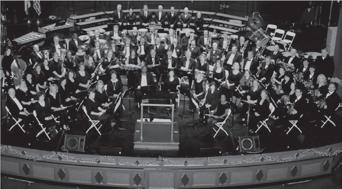
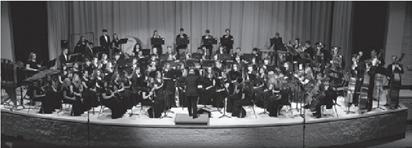
The John Carroll Singers is in its thirty-fourth year of existence as the premier choral ensemble at John Carroll Catholic High School. The choir has consistently received superior ratings at district, state, and national choral festivals and competitions. This past year, the John Carroll Singers finished 2nd at the World Strides Heritage Performance in Chicago, IL.

32 October/November 2014
AMEA 2015 Performing Groups






Johnnie Carr Middle School in Montgomery, Alabama opened in 2009 with grades 7-9. Christine Moore has been choral director since its inception. During the fall of the first year of operation, the Choraliers participated in the Peanut Festival in Dothan, Alabama and scored superior ratings. One year later in 2010, the middle school concept was established and the school began serving students in grades 6-8. The Choraliers are very diverse with a mixture of ethnicities and races of people from around the world with students from Korea, Africa, Mexico as students of parents who are part of the Maxwell Air Force Base War College. Johnnie Carr Middle School recently applied for authorization to become an International Baccalaureate School in which Mrs. Moore serves as the IB Coordinator. November 2, 2013 was a proud day for our students because we tied for 1st place in division 4 at the Peanut Festival.
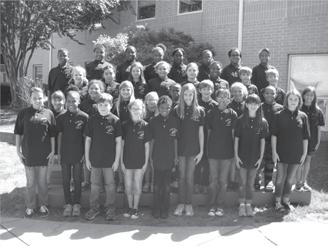
The McAdory Elementary Orff Ensemble, led by director, Melissa Thomason, is an after school auditioned group consisting of fourth and fifth grade students. These students, through the teaching method developed by Carl Orff, learn rhythmic, melodic, and improvisational skills using both pitched and non-pitched percussion instruments. The group has performed for many local, community, and school events, including the Birmingham Earth Day Festival and the Bessemer Music Club. They are very excited to have the opportunity to perform for the AMEA membership!
The Monrovia Middle School Bands currently have 291 members within its three ensembles. The Advanced Band has consistently received Superior ratings at Music Performance Assessment and has won first place at Music Showcase Festivals and Music in the Parks Festivals in Pigeon Forge, TN nine of the past eleven years. The Monrovia Bands have also placed many students in the All-State Bands and three of its students have eventually won the state “Super Solo” competition.
The Strings in Schools program was founded in 2005, under the leadership of Dr. Anne C. Witt. All middle and high schools in the Tuscaloosa City Schools have a string program within the school day, making TCS a comprehensive music school district. All six middle schools have strings and all three high schools have orchestras. The leadership of Superintendent Dr. Paul McKendrick and Principal Andrew Maxey has made it possible for the Strings in Schools program to flourish. Additional support from Arts Coordinator Dr. Jeffrey Schultz and TCS band, choral and elementary teachers has been significant. Rock Quarry Middle School was founded in 2008, and has a population of 500 students this year. The strings program began with 35 that first year and has now grown to 110. In 2013, the Disney Festival was their first competition; the Rock Quarry Orchestra won top honors, including all Superior ratings, the Gold Award and Best in Class. In addition to regular concerts, Rock Quarry string students are in demand for small group performances. They have played for UA gymnastics meets, church events, private parties, community clubs and the Rotary club. By special invitation of Mayor Walt Maddox, Rock Quarry Strings played for the Installation of the City Council and City School Board members. The AMEA concert will be presented by all of the 7th and 8th grade string players. Students are not selected from the classes – all are participating. Mrs. Allison Lavender is the founding director.
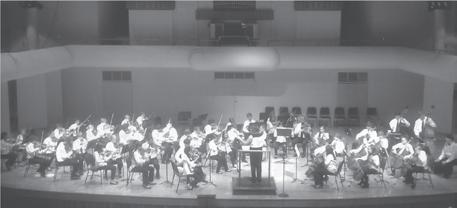
Shades Valley High School was established in 1948 in Homewood, AL and moved to its present location in Irondale, AL in the fall of 1996. The Shades Valley Symphonic Band is the top performing ensemble in a larger overall program that offers experiences in marching band, AP music theory, guitar and numerous chamber music ensembles. Band seniors each year average over 3.5 million dollars in scholarship opportunities in the areas of academics, leadership and musical achievement. The Symphonic Band has been a past performing group for the Alabama Music Educators State Conference, the University of Alabama Honor Band Festival, the 2009 Music for All National Concert Band Festival and the 2013 Southeastern United States Concert Band Festival. They have twice been named an Honor Ensemble at the Grand National Adjudicators Invitational Concert Band Festival. Quality literature serves as the curriculum and chamber music participation as the foundational cornerstone of this outstanding ensemble. 2015 will mark the sixth appearance since 2008 of an ensemble from the Shades Valley Band program at the Alabama Music Educators’ Association State Conference.


ala breve 33
AMEA 2015 Performing Groups





Sparkman High School is located in Harvest just outside Huntsville, Alabama and is part of the Madison County School System. The Sparkman High School Band program consists of 221 nine through twelfth grade musicians that make up two concert bands and a premiere wind ensemble during the spring semester. During the fall semester, Sparkman has an audition only competition band consisting of 162 members and a 247 piece Marching Band that performs at football games. The program also maintains two winter guard units and an indoor marching drumline during the spring semester. The Sparkman Wind Ensemble has earned superior ratings with distinction at the Alabama Music Performance Assessment every year since the group was established in 2011. The Sparkman Concert Band and 9th Grade bands have also earned superior ratings at MPA every year since 2011 with both groups earning distinction honors during this time.
The TROY University Concert Chorale is one of the premier vocal ensembles in the TROY University John M. Long School of Music. This smaller mixed choir performs chamber, classical, traditional, and contemporary choral literature and membership is open by audition. Students in the Concert Chorale represent a wide variety of majors and most are studying at the undergraduate level.


frequency is Troy University’s auditioned, select vocal jazz ensemble and is devoted to the performance of traditional and contemporary a cappella and accompanied ensemble vocal jazz. frequency is designed to provide a quality performing experience for advanced students of all undergraduate majors utilizing excellent repertoire from a wide variety of challenging contemporary vocal jazz genres. This group performs without a conductor and a high level of group synergy is required. Since 2009, frequency has had the privilege of working with Greg Jasperse, Kerry Marsh, Christine Guter and Julia Dollison during on-campus residencies.


Tuscaloosa County High School is located in Northport, Alabama and is part of the Tuscaloosa County School System. The high school has 1,700 students in grades 9-12. This is the second year of The Tuscaloosa County High School Wind Ensemble as exponential growth within the band program has allowed for the creation of another performing ensemble. The group has a set number of forty-eightwinds and percussion. Membership into the ensemble is based on yearly audition. Approximately sixty-percent of the ensemble studies privately in some capacity. Founded in 1926, The Tuscaloosa County High School Band is one of the oldest high school bands in Alabama in continuous existence. The strong support from the alumni, community, parents, and administration ensure that the future of the County High Band is bright for generations of musicians to come. The Tuscaloosa County High School Marching Band has appeared in parade performances in New York, Chicago, New Orleans, Washington, D.C., London and San Antonio, Texas. Other performing groups at Tuscaloosa County High School include the Symphonic Band, the Chamber Winds, Woodwind Quintet, Trombone Choir, and our jazz band – The Velvet Blue Orchestra.
The University of Alabama Trombone Choir is designed to serve as a pedagogical extension of the Trombone Studio, giving students the opportunity to apply skills learned in lessons to a musical setting. The choir is a very active part of the School of Music at Alabama, performing regular concerts on campus as well as several outreach concerts a year, including performing at UA athletic events. The Trombone Choir has performed at the 2010 Eastern Trombone Workshop in Washington, DC, the 2011 International Trombone Festival in Nashville, TN and the 2013 International Trombone Festival in Columbus, GA.

34 October/November 2014










































JACKSONVILLE STATE UNIVERSITY DAVID L. WALTERS DEPARTMENT OF MUSIC www.jsu.edu/music Monday, February 16, 2015 Friday, February 20, 2015 and Saturday, February 21,2015 Friday, February 27, 2015 and Saturday, February 28, 2015 /JacksonvilleStateUniversity /JSUNews #WhereYouAreGoing /JSUpix AUDITION DATES M USIC DA ACKSO A CKSO JJ TMENT AR TERS DEP DEPAR AL VID W UNI U NI EE TATT T SS LLE L LE II VV NN YY TT RSI R SI EE VV
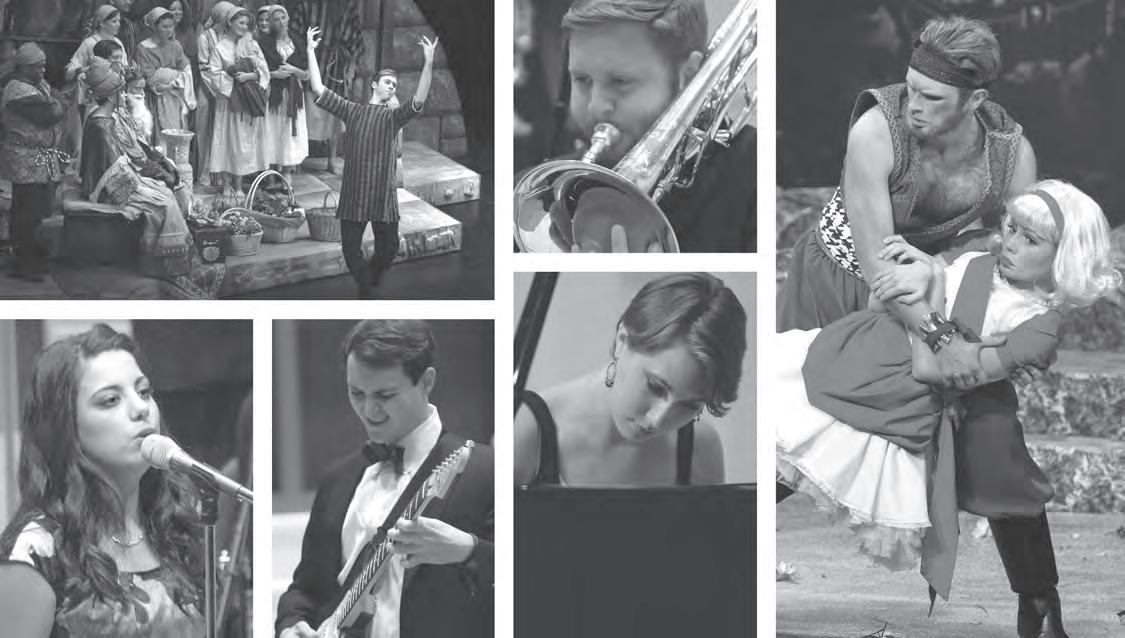
Audition and Interview Weekends for Prospective Music and Theatre Majors November 14–15, 2014 February 6–7, 2015 February 27–28, 2015 Forms and additional information are available at www.samford.edu/arts
University
an Equal Opportunity Educational Institution/Employer.
O ce of Marketing and
36 October/November 2014
Samford
is
Produced by Samford
Communication
5:30 - 6:00 pm
6:00 - 8:00 pm
6:00 - 9:00 pm
6:30 - 7:00 pm
7:00 - 9:00 pm
8:15 pm
2015 C 2015 C ONFERENCE ONFE RENCE S S CHEDULE CHEDULE
Wednesday, January 21, 2015
7:45 - 8:45 am
8:00 am - 5:00 pm
All-State Show Choir Registration - Exhibit Hall C
AMEA Governing Board - Renaissance, Riverview 2
Carl Hancock, Presiding
All-State Show Choir Rehearsal - Exhibit Hall C
Alabama Intercollegiate Band Directors Meeting - Huntingdon College
Alabama Intercollegiate Band Seating Auditions - Huntingdon College
ABA Governing Board - Renaissance, Riverview 1
Rusty Courson, Presiding
AVA Governing Board -Renaissance, Riverview 4
Carl Davis, Presiding
AMEA Collegiate Governing Board - Renaissance, Riverview Boardroom
Stacy Daniels, Presiding
AOA Governing Board - Renaissance, Riverview 3
Sarah Schrader, Presiding
AMEA Leadership Breakfast - Renaissance, Alabama Ballroom B
Conference Registration - Renaissance Registration Booth
9:00 - 9:50 amABA Performance - Montgomery Performing Arts Center
Faith Academy Symphonic Band, David Pryor, Conductor
Thursday, January 22, 2015
9:00 - 10:00 am
Interest Session - Renaissance, Alabama Ballroom A
Using Classical Music to Teach Beat, Meter, and Form - John Feierabend, Clinician
Interest Session - Renaissance, Alabama Ballroom CD
Music Theory - It's NOT a Four-Letter Word! - Margaret Heron, Clinician
Interest Session - Renaissance, Alabama Ballroom E
From Singing to Saxophones: Choral Specialists in the Instrumental Classroom
Edward Hoffman and Melinda Doyle, Clinicians
Interest Session - Renaissance, Riverview 3
Do You Hear What I Hear? - Dr. Anne Witt, Clinician
FAME - Session 1 - Renaissance, Riverview 1
9:00 am - 12:00 pm
9:00 am - 12:30 pm
10:00 am
10:30 - 11:30
All-State Show Choir Rehearsal - Renaissance, Exhibit Hall C
Alabama Intercollegiate Band Rehearsal - Renaissance, Exhibit Hall A
Exhibits Grand Opening - Renaissance, Exhibit Hall B - Open until 5:00 p.m.
Special Exhibit Hall Performance by the University of Alabama Trombone Choir
amABA Performance - Montgomery Performing Arts Center
Tuscaloosa County High School Wind Ensemble, Dr. Jed Smart, Conductor
ala breve 37
Thursday, January 22, 2015
10:30 - 11:30 amInterest Session - Renaissance, Alabama Ballroom A
Singin' and Swingin' at the K-4 Chorale - Michael and Jill Gallina, Clinicians
Interest Session - Renaissance, Alabama Ballroom CD
Ask Not For Whom the Bell Tolls: Getting the Most Out of Your Choir's Rehearsal Time
Ian Loeppky, Clinician
Interest Session - Renaissance, Montgomery 5
The Hurry-Up No-Huddle Rehearsal: How College Football Can Change Your Classroom
Phillip Stockton, Clinician
Interest Session - Renaissance, Riverview 3
Innovative Uses of Technology in the Orchestra Rehearsal - Joseph Brennan, Clinician
FAME - Session 2 - Renaissance, Riverview 1
12:00 - 1:00 pm
Past Presidents Luncheon - Renaissance, Riverview 2
HED Luncheon - Renaissanc, Riverview 4
FAME Luncheon - Renaissance, Starlight Foyer
1:00 - 2:00 pmAVA Performance Session - Montgomery Performing Arts Center
Johnnie Carr Middle School Choraliers, Christine Moore, Conductor
Center Point High School Chorale, Vedric Shelby, Conductor
Interest Session - Renaissance, Alabama Ballroom A
First Steps In Creative Movement for Elementary - John Feierabend, Clinician
ABA Performance - Alabama Ballroom CD
Auburn University Jazz Ensemble - Dr. Michael Pendowski, Conductor
1:00 - 3:00 pmInterest Session - Renaissance, Riverview 3
JW Pepper Orchestra Reading Session
HED Research Poster Session - Exhibit Hall Lobby
2:00 - 5:00 pm
All-State Show Choir Rehearsal - Exhibit Hall C
2:10 - 3:00 pmInterest Session - Renaissance, Alabama Ballroom A
Beginning Steps to Choral Success! - Michael and Jill Gallina, Clinicians
Interest Session - Renaissance, Alabama Ballroom B
Teaching and Rehearsing Middle School Marches - Marguerite Wilder, Clinician
Interest Session - Renaissance, Alabama Ballroom CD
Saying What We Mean, Not Just Saying What We ‘Say': Feedback in the Choral Rehearsal Tucker Biddlecombe, Clinician
Interest Session - Renaissance, Alabama Ballroom E
The Lost Art of Clarinet Playing - John Cooper, Clinician
Interest Session - Renaissance, Montgomery 5
Student Teaching: Will You Make It or Break It? - Lisa Gillespie, Clinician
FAME Session 3 - Renaissance, Riverview 1
2:30 - 5:30 pm
Alabama Intercollegiate Band Rehearsal - Exhibit Hall A
38 October/November 2014
3:10 - 4:00 pm
Interest Session - Renaissance, Montgomery 5
Thursday, January 22, 2015
Percussion Methods Revisited: For Band Directors, Luis Rivera and Matt Greenwood, Clinicians
Interest Session - Renaissance, Alabama Ballroom B
At the Starting Gate: The First Ten Minutes - Elva Kaye Lance, Clinician
Interest Session - Renaissance, Alabama Ballroom CD
Conserve, Love, Understand, Teach: Doable Masterworks for Your High School Chorus
Tucker Biddlecombe, Clinician
Interest Session - Renaissance, Alabama Ballroom E
Classroom Management in the Music Classroom: Pin-drop Quiet Rehearsals - David Newell, Clinician
FAME Session 4 - Renaissance, Riverview 1
3:10 - 4:10 pmAOA/ELEM Performance Session - Montgomery Performing Arts Center
Rock Quarry Middle School Orchestra - Allison Lavender, Conductor
McAdory Elementary Orff Ensemble - Melissa Thomason, Conductor
4:30 - 5:30 pm
HED Recital - Renaissance, Alabama Ballroom CD
4:40 - 5:30 pmABA Performance Session - Montgomery Performing Arts Center
Sparkman High School Wind Ensemble, David Raney, Conductor
Interest Session - Renaissance, Alabama Ballroom A
Becoming Tuneful, Beatful, and Artful - John Feierabend, Clinician
Interest Session - Renaissance, Mongomery 5
Technology & The Quaver Music 6-8 Curriculum - Arthur Watson, Clinician
Interest Session - Renaissance, Riverview 3
Intro to Fiddle Styles for the Beginner Player - Crystal Wiegman, Clinician
Elem/Gen Board Meeting - Renaissance, Riverview 2
5:30 - 7:00 pm
Collegiate Mixer - Renaissance, Alabama Ballroom B
HED Mixer - Renaissance, Alabama Ballroom E
7:00 - 9:30 pm
All-State Show Choir Rehearsal - Exhibit Hall C
7:15 - 8:15 pmInterest Session - Renaissance, Montgomery 5
Directors Commentary - Danielle Todd, Moderator
Connie Hammond and Leslie Welker, Panelists
Interest Session - Renaissance, Alabama Ballroom A
Interactive Rhythm - Dave Holland, Clinician
7:30 - 8:15 pmAVA Performance Session - Montgomery Performing Arts Center
John Carroll High School Singers - Lee Wright, Conductor
7:30 - 9:30 pm
Alabama Intercollegiate Band Rehearsal - Exhibit Hall A
8:30 - 9:30 pmABA Performance Session - Montgomery Performing Arts Center
Shades Valley High School Symphonic Band - David Allinder, Conductor
9:30 - 11:00 pm
Opening Night Reception - Renaissance, Alabama Ballroom B
University of Alabama Jazz Quintet and Jazz Bones
ala breve 39
Friday, January 23, 2015
7:30 am - 1:00 pm
8:00 - 9:00 am
Conference Registration Open
ABA Business Meeting - Renaissance, Alabama Ballroom CD
Interest Session - Exhibit Hall C
Conducting Workshop - Erin Colwitz and William Dehning, Clinicians
Interest Session - Renaissance, Alabama Ballroom A
Frames and Games - Dave Holland, Clinician
Interest Session - Renaissance, Montgomery 5
HED Session - Robert Duke, Clinician
Interest Session - Renaissance, Riverview 3
Double Bass - Five Strategies for Building Better Technique in Your Students - David Ballam, Clinician
8:30 - 11:30 am
8:30 am - 5:00 pm
9:00 am - 12:00 pm
Alabama Intercollegiate Band Rehearsal - Renaissance, Exhibit Hall A
Exhibits Open - Exhibit Hall B
All-State Show Choir Rehearsal - Exhibit Hall C
9:10 - 10:00 amInterest Session - Renaissance, Ballroom A
AVA Reading Session - Tucker Biddlecombe, Clinician
Interest Session - Renaissance, Ballroom CD
Musicianship in Beginning Band: How to Motivate and Measure Success!
Deborah Confredo, Clinician
Interest Session - Renaissance, Ballroom E
Do Recorders & Technology Play Well in the Classroom? QK-5 Curriculum Overview
Arthur Watson, Clinician
Interest Session - Renaissance, Montgomery 5
I Want A Student Teacher! Got One. What Now? - Danielle Todd, Clinician
Interest Session - Renaissance, Riverview 3
Beyond Boil The Cabbage: Tips, Tricks and Cool Tunes for Authentic Fiddling in the Intermediate String Orchestra
Crystal Plohman Wiegman, Clinician
10:15 - 11:45 amAMEA General Session - Montgomery Performing Arts Center
Fanfare - University of Alabama Trombone Choir, Jonathan Whitaker, Conductor
National Anthem
AMEA Business Meeting, Carl Hancock Presiding
Beautiful - Robert Duke, Keynote Speaker
Monrovia Middle School Advanced Band - Donald Dowdy, Conductor
12:00 - 1:00 pm
Collegiate Luncheon - Renaissance, Ballroom A
Phi Beta Mu Luncheon - Renaissance, Ballroom B
1:00 - 3:00 pm
1:15 - 2:15 pm
Alabama Intercollegiate Band Rehearsal - Renaissance, Exhibit Hall A
ABA Performance Session - Montgomery Performing Arts Center
The Alabama Winds - Randall Coleman, Conductor
Interest Session - Renaissance, Ballroom CD
Keeping In Step: Applications of the National Core Arts Standards (NCAS) in Today's Music - Becky Halliday, Clinician
40 October/November 2014
1:15 - 2:15 pm
Interest Session - Renaissance, Alabama Ballroom E
Friday, January 23, 2015
Need a Tune-up? The Importance of Vocal Pedagogy and the Refinement of Vocal Production in the Choral Rehearsal
Melinda Doyle, Clinician
Elementary/General Business Meeting - Renaissance, Montgomery 5
2:00 - 5:00 pm
2:30 - 3:20 pm
2:30 - 3:20 pm
All-State Show Choir Rehearsal - Exhibit Hall C
Interest Session - Renaissance, Ballroom A
Using Classical Music to Develop Rhythmic and Melodic Literacy - John Feierabend, Clinician
Interest Session - Renaissance, Ballroom B
Habits of a Successful Middle School Band Director - Jeff Scott and Emily Wilkinson, Clinicians
Interest Session - Renaissance, Ballroom CD
Vocal Health & Technique: Advice for Choral Directors - Matthew Hoch, Clinician
Interest Session - Renaissance, Ballroom E
The Quickening Art: Emotion & Pedagogy in the Performance Class - Joshua Wine, Clinician
Interest Session - Renaissance, Montgomery 5
HED Panel Discussion: View from the Chair - James Zingara, Moderator
Panelists: Sara Lynn Baird, Dr. Kathryn Fouse, Dr. Alan Goldspiel and Dr. Charles Snead
Interest Session - Renaissance, Riverview 3
String Intonation Accuracy through Ghost Shifting - Daniel Stevens, Clinician
3:30 - 4:20 pm
3:30 - 4:30 pm
AVA Performance Session - Montgomery Performing Arts Center
Troy University frequency - Diane Orlofsky, Conductor
ABA Reading Session - Exhibit Hall A
Hot off the Press!! New Music for Band - Deborah Confredo, Clinician
The Alabama Winds, Demonstration Group
Interest Session - Renaissance, Ballroom A
"I Do" Marrying Orff and Kodaly Methologies - Becky Halliday and Edward Hoffman, Clinicians
Interest Session - Renaissance, Ballroom B
Design Considerations for Secondary Music Facilities - Steve Weise, Clinician
AOA Business Meeting - Renaissance, Riverview 3
4:30 - 5:00 pm
4:45 - 5:45 pm
7:00 - 9:00 pm
7:00 - 9:15 pm
Exclusive Exhibit Time (Prize Drawing) - Exhibit Hall B
Alabama Intercollegiate Band Dress Rehearsal - Montgomery Performing Arts Center
All-State Show Choir Rehearsal - Exhibit Hall C
AMEA General Session - Montgomery Performing Arts Center
AMEA Awards
Troy Concert Chorale - Diane Orlofsky, Conductor
Alabama Intercollegiate Band - Colonel John R. Bourgeois, Conductor
Saturday, January 24, 2015
7:30 - 8:45 am
8:00 - 9:00 am
All-State Show Choir Dress Rehearsal - Montgomery Performing Arts Center
ABA Business Meeting - Renaissance, Ballroom B
AVA Business Meeting - Renaissance, Ballroom CD
ala breve 41
Saturday, January 24, 2015




8:00 - 9:00 am
Interest Session - Renaissance, Ballroom A
Keeping In Step: Applications of the NCAS in Today's Music Classroom - Becky Halliday, Clinician
Interest Session - Renaissance, Ballroom E
Rhythm: How Can Something So Simple Be So Difficult to Teach? - David Newell, Clinician

9:15 - 10:00


amAVA Performance Session - Montgomery Performing Arts Center


All-State Show Choir - Paul Gulsvig and Jarad Voss, Clinicians
9:15 - 10:15
amInterest Session - Renaissance, Ballroom A

"Aint I Rock Candy": Integrating Alabama Fold Materials in the Elementary Classroom - Rob Lyda, Clinician

Interest Session - Renaissance, Ballroom B
Tips to Successfully Recruit & Retain Instrumental Music Students - Marcia Neel, Clinician

Interest Session - Renaissance, Ballroom CD
Your Movement Potential and Conducting - Brian Kittredge and Sue Samuels, Clinicians
Interest Session - Renaissance, Montgomery 5
From the Podium to the Player: Two Perspectives on Symphonic Percussion - Jeff Grant & Jon Bowman, Clinicians
10:30 am - 12:00



pmABA Performance Session - Montgomery Performing Arts Center
All-State Middle School Jazz Band - Sallie Vines White, Clinician
All-State Silver Jazz Band - Bob Lark, Clinician
All-State Gold Jazz Band - Tom Walsh, Clinician
ACDA Business Meeting - Renaissance, Ballroom E
1:00 - 3:00 pm
AMEA Governing Board Meeting - Renaissance, Riverview 2
42 October/November 2014
Programming for Band
The Continuing Quest for Quality and “Fit”
One of the most difficult responsibilities we have as instrumental music teachers is selecting quality repertoire that is appropriate for our ensembles. If we are conscientious about this task, it takes time, deep thought, and can at times, be frustrating. Considering a number of principles can make this process more artistic, and hopefully, less difficult for all teachers.
A reality that all instrumental music teachers face is that our repertoire is our curriculum. The question we all should ask is, what do we want our students to learn during the time they are in our ensembles? It is very easy to become trapped in the concert preparation cycle and forget that we are responsible for the music education of our students. So what are some elements to consider while selecting repertoire?
Historical Time Periods
One of the first considerations should be a variety of historical time periods. It’s easy to program all of the latest new compositions and neglect works from the baroque and classical periods. There are many excellent transcriptions of early music that work well with wind groups.
Technical Demand
Considering technical demand should occur on multiple levels. If all works programmed for a performance are technically demanding, it is very likely musical expression will suffer. Consider programming some pieces that your students can sight-read with ease; works like this will enable everyone to focus on valuable ensemble skills like listening, matching articulation, and intonation.
More difficult works, or “project pieces”, can be scheduled later in the term and/or year. Programming more substantial works later in a term allows students time to develop individual technique. Allowing more time to rehearse more difficult works allows students extra time to not only learn their part, but to learn everyone else’s part as well. This next level of “knowing” beyond the individual part is something we should all strive for with our students.
Harmonic Interest
Many new works are harmonically predictable. If we continually program works that lack harmonic interest and variety, we are limiting the student’s experience. Search out works that “sound different” and avoid harmonic
clichés. The composition that leads the listener to an unexpected place is the one that most interests me. If we believe our students won’t enjoy performing dissonant or harmonically challenging works, it is our responsibility as teachers to introduce the piece in such a way that prepares the students for the “unknown”.
Formal Design
If you are band director you are well acquainted with the following form: introduction, A, B, A’, coda. We must avoid an overabundance of concert overtures and works that contain a “drum break” between the introduction and A section. Total avoidance of this form is not ideal, as we know that many professional orchestras open concerts with an overture, but variety is a key component of successful programming.
Unique Scoring and Orchestration
There is safety in numbers. Composers who write for young bands tend to use more block scoring. This helps students gain confidence while they develop individual musicianship. Once those skills are more secure it is imperative that we expose our students to a wider rage of orchestration.
I have looked at scores and noticed the trumpet ranges or the English horn solo and closed it right away. I think back to those moments and realize that may have been the moment I denied a student an opportunity for growth. Trust me, there is a fine line between appropriate challenges for students and hanging them out to dry!
Some of the most talented and creative composers combine instruments in a way to create beautiful and unique sounds that we may not have experienced. Our band colleagues certainly know that the combination of alto saxophone and piccolo is a sure sign of a Vincent Persichetti composition!
Rotation of Masterworks
In many situations there may be more than one ensemble in the school. You may consider establishing a rotation system for composers and/or compositions. If your ensemble has the ability to play the Holst suites, consider rotating each piece every two years. In this scenario your students will have the opportunity to play both of these wonderful works during their four years in your program.
by Rodney Dorsey
Chamber Music
This is also an appropriate time to consider chamber music. As a college band director, I have accepted the fact that there are students who prefer to play in orchestra. It can be difficult for individuals to hear themselves play in large bands. When I program chamber music it allows students the opportunity to interact with their colleagues in a more musically intimate way. We also know that students develop more musical independence and confidence through performing chamber music.
Works for Study versus Performance
In my current setting rehearsal time is very limited and precious. If you have more time consider using some of the more difficult pieces as works for study. When I was a high school band director there were works in the folder that we never played for festivals or concerts. Consider using these pieces to build individual/ensemble skills, or as the subject of group projects based on the composer, a historical period, or a programmatic element of the piece.
Your Audience
I also consider my audience while programming for my ensemble. If the majority of our repertoire is harmonically challenging our audiences may feel alienated. Notice the large audiences in concert halls when symphony orchestras program Beethoven’s Ninth Symphony!Programming something accessible on the same program that you play a modern work is a way of exposing your audience to diverse sound worlds.
Self Improvement
If you are reading this article you are interested in improving your teaching. There are several ways you can expand your knowledge of repertoire:
Lists: Collect and refer to a variety of repertoire lists. The internet allows us access to music lists from a number of state associations. Download the graded lists and search for titles and/or composers you may not know.
Trusted Colleagues: Talk to colleagues you respect to get ideas for new works. When I started teaching I had a local band director recommend quality pieces he thought would work well for my ensemble. This was very helpful as I was fresh out of college and didn’t have a working knowledge of works for young bands.
Classical Concert Reviews: Be aware of
ala breve 43
Editor’s Note: This article appears as one of a series written especially for Ala Breve by experts in the field of music education.
classical concert reviews in newspapers like the New York Times. If there is a composer mentioned that you don't know, spend a few minutes online to look up their bio and works list. The compositions may not be appropriate for your ensemble, but it's very possible you may find music that expands your knowledge base.
Composer Websites: Many composers have extensive websites that sometimes feature recordings and PDF scores. What better way to learn new works than through the composers own website.
Attend other Concerts: Schedule time to attend recitals and concerts out of your main area of expertise. Learn new composers and expose yourself to new soundscapes. One of these composers may have written a piece for winds.
A Few Works to Consider
I've included a list of works that are worthy of your consideration. Many of these pieces are considered major works for band. Those are the works that can be used as musical benchmarks to measure the quality of any other work. If you don't know a work or a composer take a few minutes and look them up, you may find something you'll want to share with your students!
Arnold/JohnstoneEnglish Dances
Barfield Here We Rest
Bassett Sounds, Shapes, and Symbols
BiedenbenderLuminescence
Benson The Leaves are Falling
Benson The Solitary Dancer
Broege Sinfonia VI
Catel Overture in C
Chance Elegy
CoplandEmblems
CoriglianoGazebo Dances
Dahl Sinfonietta
Dello JoioFantasies on a Theme by Haydn GianniniVariations and Fugue
Gossec/GoldmanMilitary Symphony in F
Gould Ballad for Band
Grainger Colonial Song
GraingerLincolnshire Posy
HailstorkAmerican Guernica
HarbisonThree City Blocks
HindemithSymphony in B-flat
Holst Hammersmith
Holst Suites in E-flat and F

Husa Al Fresco
Jacob William Byrd Suite
LaPlanteAmerican Riversongs
Latham Three Chorale Preludes
Linn Propagula
MaslankaTraveler
Nelson Courtly Airs and Dances
PersichettiO Cool is the Valley
Scheidt/DaehnCanzona Bergamasca
Schmitt Dionysiaques
SchoenbergTheme and Variations, Op. 43a
SchumanGeorge Washington Bridge
Scriabin/ReedNocturne, Op. 9, No. 2
Stuart Three Ayres from Gloucester
Tull Sketches on a Tudor Psalm
Turina/KranceFive Miniatures
Turina/ReedLa Procession du Rocio
Vaughan WilliamsFolk Song Suite
Welcher Zion
Informative Books
Battisti, F. L. (2012). Winds of Change II: The New Millennium: A Chronicle of the Continuing Evolution of the Contemporary American Wind Band/Ensemble. Galesville, MD: Meredith Music Publications.
Camphouse, M. (2009). Composers on Composing for Band. Chicago: GIA Publications.
Fennell, F. (2008). A Conductor's Interpretive Analysis of Masterworks for Band. Galesville, MD: Meredith Music Publications.
Kreines, J., & Hansbrough, R. (2014). Music for Concert Band. Galesville, MD: Meredith Music Publications.
Miles, R. B., & Blocher, L. (1997). Teaching Music Through Performance in Band Chicago: GIA Publications.
Mitchell, J. C. (2008). Ralph Vaughan Williams' Wind Works. Galesville, MD: Meredith Music Publications.
Salzman, T. (20032012). A Composer's Insight: Thoughts, Analysis, and Commentary on Contemporary Masterpieces for Wind Band. Galesville, MD: Meredith Music Publications.
Identifying and programming quality repertoire for your ensemble is time consuming, but is also extremely rewarding. The process of discovering new composers and works requires all of us to be vigilant and consistently aware of new publications. Composers and publishers websites allow us unprecedented access to new compositions. We must take advantage of this access to enhance and improve the music education of our students.
Rodney Dorsey is Associate Professor of Music, and Director of Bands at the University of Oregon, where he teaches graduate courses in wind conducting, repertoire, and conducts the Oregon Wind Ensemble.

44 October/November 2014
Online Professional Development! Got music education questions? Want some expert advice? NAfME offers this exciting free benefit to members throughout the school year. NAfME members visiting the band, orchestra, chorus, jazz, inovations, guitar, composition, Collegiate and general music networks can get expert advice in answer to their questions. Visit the forums at www.nafme.org

FAME Future Alabama Music Educators
Open to High School Juniors and Seniors
Thursday, January 22, 2015 9:00 A.M. - 4:00 P.M. Renaissance Montgomery Hotel at the Convention Center
Application and $20 registration fee are due postmarked no later than January 9, 2015
Student_____________________________________________________________ Grade ____________________
Nominating Teacher ____________________________________________ NAfME # _________________________
School Name ____________________________________________________________________________________
School Address __________________________________________________________________________________
Teacher Phone ________________________________ Teacher Email ______________________________________
This student participates in (circle all that apply): Band Chorus Orchestra
Publicity Waiver
I give AMEA permission to take photos of FAME attendees and use the photos for publicity purposes. By this authorization, I understand and agree that no participant shall receive remuneration and that all rights, title and interest to the photos and use of them belongs to AMEA.
Enclose $20 Registration Fee Make checks payable to AMEA
Signature of StudentSignature of Parent if Student is under 18
The FAME program includes many important topics for students considering a career as a music educator.
NEW! AMEA provides a $1000 scholarship opportunity to a FAME participant who plans to major in music education at an Alabama college or university. Visit www.alabamamea.org for details.
Lunch will be provided by AMEA
Mail this application, along with the $20 registration fee, to: Sara Womack, AMEA Past President 2130 Banberry Drive Hoover, AL 35244
Postmark Deadline: January 9, 2015
46 October/November 2014
YOUR MENTORS ARE FOR LIFE
October is a time when the shine of the new school year has faded just enough to see the hard work underneath. As students of all ages turn their eyes upward toward a teacher, we teachers continue the age-old process of taking students under our wing. For many teachers and professors, becoming a mentor is one of the most satisfying parts of our academic journey. To give our time and attention, to watch a student try and succeed, and to know that our advice is at least occasionally heeded—these are the small victories that make a teacher proud. If you have been teaching more than a year or two, you may have even experienced that precious occasion of the student thankyou: an email, a small card, or best of all a visit that lets you know that you made a difference in another’s life.
The process of teacher-student mentoring is an important one. Researchers have shown that conscientious mentoring can make an enormous difference in a student’s success rate.1 Sonia Sotomayor, Supreme Court Justice, spoke of the importance of mentors, saying, “… a role model in the flesh provides more than inspiration; his or her very existence is confirmation of possibilities one may have every reason to doubt, saying, 'Yes, someone like me can do this.”2
The term “mentoring” may mean different things to different people. Definitions range from, "Mentoring . . . is a process by which persons of superior rank, special achievements, and prestige instruct, counsel, guide, and facilitate the intellectual and/or career development of persons identified as protégés” to "someone in a position of power who looks out for you, or gives you advice, or brings your accomplishments to the attention of other people who have power….”4 Most definitions, however, focus on the special relationship between an experienced and less-experienced person. Many researchers group the functions of a mentor into two broad categories: job and career benefits, and psychosocial benefits. Though much research has focused on benefits to the protégé, benefits abound for the mentor as well, including the development of a reliable subordinate and feeling that one is contributing to the profession by giving back.5
Because future music educators typically consider a career as a music teacher while still in high school,6
ensemble teachers may be the first important mentors for fledgling musicteachers-in-the-making. High school students look to their band, orchestra, and choir directors as their first glimpses of a possible career path, allowing students to “try on” the identity and test the fit. Students in your ensembles are not just in the process of becoming musicians: many are ripe to develop their skills as a teacher. School music teachers can have an extremely positive influence as mentors at this crucial stage. Some suggestions from the research on how to mentor high school students towards a career in music education include the following:7
Show your love of music and love for teaching
Make playing in your ensemble a positive experience
Allow interested students the opportunity to teach whenever possible, such as conducting the warm-up, helping a peer or lessexperienced student, or leading small group activities
Talking with students about the most rewarding aspects of music teaching
Discussing their musical, professional, and personal growth as music students and future teachers
Challenging the students musically
As students move into college majors, professors and student-teaching mentor teachers take on a more primary role as mentors.8 Undergraduate musicians bound for music education careers often spend the first several years in college undergoing a process of re-socialization toward the idea of being a music teacher rather than a performer. 9 To do this they must reconcile what they’ve been told by their high school directors and private teachers with what they are now hearing from professors, constructing a new identity. Barriers to this new identity include perceptions of music education majors as “less than” their performancemajor peers , social status being granted on the basis of musicianship above teaching ability.
Researchers have found that college faculty members can exert a strong positive influence on pre-service teachers decisions to pursue music education careers . Professors—in music education, theory/history, and applied music capacities—can assist in this journey in role socialization by providing opportunities for positive experiences in music teaching, encouraging students
by Virginia Wayman Davis
to continue developing their musicianship, and developing strong mentor/mentee relationships with the pre-service teachers.
Once students make the transition to beginning teacher, the mentoring process remains important. Because music teachers may be the only ones of their “type” in the building, some music teachers may become isolated or feel misunderstood and unappreciated.11 Relying on the support of a mentor can make the difference between a successful and an unsuccessful first year.12 To combat the sense of isolation that new music teachers feel, experienced music teachers can offer their services as mentors: call up that new teacher, arrange to visit their classroom after school, take the person out to lunch or for coffee. Through formal and informal means, we music teachers can provide a support system that may be missing at the building level. The colleague-mentor process has also been found to greatly benefit from district-sponsored release time for mentors and new teachers to collaborate during seminars and workshops.13 Based on research with music teachers and mentors, Conway offered a list of general suggestions for mentors given by the teachers themselves:14
“Make it impossible to get blown off (don’t send an e-mail and give up) Sometimes it is good to show them that it can be done with these kids? Ask to model with their kids Find balance; know when to listen and when to help problem solve Build trust—less threatening to talk about things like technology than changing your teaching Sit together at lunch during seminars
Model that “We are all learners here”
E-mail mentees with three reflective questions each week Mentor should develop awareness of mentee’s teaching environment Look to what mentee can teach you/Empower them to do that Provide encouragement; positive feedback
Have conversations rather than telling them what to do”
Professors and student-teaching mentors can also help fill this role: don’t wait for your former student to contact you—instead, reach out! Check in via social media or drop by as you travel to observe current student teachers if only
ala breve 47
Editor’s Note: This article appears as one of a series written especially for Ala Breve by experts in the field of music education.
to remind them that the mentoring process is still ongoing and that you are still invested in their success. These informal visits may even allow you to encourage promising teachers toward master’s or doctoral programs in music education at your institution. According to teachers, “relationships with university faculty” comprised a large part of the positive influence toward returning to school for advanced degrees. In one research study it was found that merely being contacted and encouraged by faculty members in the graduate school application process made a appreciable difference.15
Even we as teachers, mentors ourselves, may feel the natural urge to seek comfort in the knowledgeable countenance of one who has walked the path before us. For the teacher who has chosen to work in the capacity of a college professor, being a mentor to undergraduate and graduate students is a given – and infinitely satisfying—part of our job descriptions. Yet as we mentor others, our need for mentoring continues. To develop a career as a researcher, one needs the support of colleagues to learn to navigate the world of preparing and publishing original educational research. According to researcher LeBlanc, the period after completing the dissertation is a crucial time in which a career as a researcher is “make or break:” if the young professor doesn’t continue to research, write, and publish in those first few years of a career in higher education, it likely will not happen at all.16 During this critical period, experienced professors could do well to check on their former students and offer advice and encouragement on how best to negotiate the competing responsibilities for teaching and research production. As Geringer quoted Goethe, poet and scientist, in his MENC senior research address, "If you treat an individual as he is, he will stay as he is. But if you treat him as if he were what he ought to be, he will become what he ought to be and could be."17
As I progress in this profession called teaching (but which may be more accurately described as teaching/ learning/teaching/learning in an endless loop) I am indeed finding that my need to seek mentoring has not decreased, as I perhaps expected. My needs have changed, of course; the dayto-day checkups are no longer necessary (although I do miss Dr. Don Hamann stopping by my door and “innocently” inquiring, “what have you written today?”). But even as I grow into my role as tenured professor, I still have not become my mentors’ replacement. Instead, I need them more than ever: a
proofreader, a cheerleader, someone with whom to discuss ideas.
As a wise former professor of mine told me recently (thank you, Dr. Wendy Sims) “your mentors are for life.” Call on us, she told me. Use us. What a relief to know that I don’t have to continue walking the path alone, that the mentor/mentee relationship doesn’t end at graduation. Perhaps, then, rather than a life-cycle model of mentoring in which a teacher grows up and “pays it forward,” the process is more of reaching back as well as reaching forward. Just as music making is a more powerful experience in a group, music teaching can have greater power when you draw on the experience of others.
Her words changed not only the way I approach my mentors, but also how I encourage my students and former students. I am pledging this academic year not only to reach out to the graduates of the last few years, beginning their careers in local school classrooms, but also to lean on my current mentors and perhaps cultivate new ones. In a profession such as teaching, which so depends on the connection between individuals, no teacher can afford to make one’s self an island. To quote professor Halford E. Luccock, “You can’t whistle a symphony; it takes an orchestra to play it.”18
Do you have a promising student who could use some support or an opportunity? Do you have a colleague in the early stages of their career, whatever the level? Be a mentor, pay it forward; lend an ear, lend a hand. But don’t forget that your mentors are still available to you as well: watching, cheering you on, and welcoming the opportunity to connect. Forward, back, forward, back... your mentors are for life.
References:
1Maryann Jacobi, “Mentoring and Undergraduate Academic Success: A Literature Review,” Review of Educational Research 1991, 61: 505-532.
2Sonia Sotomayor, My Beloved World (New York: Vintage 2013) 178.
3J. E. Blackwell, “Mentoring: An action strategy for increasing minority faculty,” Academe 1989, 75: 814.
4 E. A. Fagenson, “The mentor advantage: Perceived career/job experiences of protégés versus nonproteges,” Journal of Organizational Behavior 1989, 10: 309-320.
5Maryann Jacobi, “Mentoring and Undergraduate Academic Success: A Literature Review,” Review of


Educational Research 1991, 61: 505-532.
6Clifford K. Madsen and Steven N. Kelly, “First Remembrances of Wanting to Become a Music Teacher,” Journal of Research in Music Education 2002, 50: 323-332; P. Cox, “The professional socialization of music teachers as musicians and educators,” On the sociology of music education ed. Roger Rideout (Norman: University of Oklahoma, 1997) 112–120.
7Robert Gillespie and Donald L. Hamann, “Career Choice among String Music Education Students in American Colleges and Universities, Journal of Research in Music Education 1999, 47: 266-278.
8Daniel S. Isbell, “Musicians and Teachers: The Socialization and Occupational Identity of Preservice Music Teachers,” Journal of Research in Music Education 2008, 56: 162-178.
9Daniel S. Isbell, “Musicians and Teachers: The Socialization and Occupational Identity of Preservice Music Teachers,” Journal of Research in Music Education 2008, 56: 162-178.
10Daniel S. Isbell, “Musicians and Teachers: The Socialization and Occupational Identity of Preservice Music Teachers,” Journal of Research in Music Education 2008, 56: 162-178.
11Patti J. Krueger, “New Music Teachers Speak out on Mentoring,” Journal of Music Teacher Education 1999, 8: 7-13.
12Lisa DeLorenzo, "Perceived Problems of Beginning Music Teachers," Bulletin of the Council for Research in Music Education 1992, 113: 9-25
13Patti J. Krueger, “New Music Teachers Speak out on Mentoring,” Journal of Music Teacher Education 1999, 8: 7-13.
14Colleen Conway and Al Holcomb, “Perceptions of Experienced Music Teachers Regarding Their Work as Music Mentors,” Journal of Research in Music Education 2008, 56: 55-67.
15David J. Teachout, “Incentives and Barriers for Potential Music Teacher Education Doctoral Students,” Journal of Research in Music Education 2004, 52: 234-247.
16LeBlanc, A. “1992 Senior Researcher Award acceptance address,” Journal of Research in Music Education 1992, 40: 180-184.
17John M. Geringer, “On Publishing, Pluralism, and Pitching,” Journal of Research in Music Education 2000, 48: 191-205.
18Katherine Karvelas, Winning with Teamwork (Franklin Lakes, NJ: Career Press 1998) 31.
48 October/Novemberr 2014
Dr. Virginia Wayman Davis is Associate Professor of Music Education at the University of Texas – Pan American.
Each Member of the Jaguar Marching Band receives a scholarship
Full-Band travel opportunities to away games and exhibitions

Matching university-provided wind instruments


New custom drumline for 2014 Season
One Pre-Game Show and Three Half-Time Themes each season
Fastest growing university in the state and region NO fees and NO fundraising

AUDITION DATES
WIND
November 8, 2014
February 14, 2015
March 14, 2015





April 4, 2015
COLOR GUARD

June 27, 2015
DRUMLINE July 9-11, 2015



DRUMLINE COLOR GUARD AND




JAGUAR MARCHING BAND UNIVERSITY OF SOUTH ALABAMA










WIND ERSITY B
Laidlaw Performing Arts Center 5751 USA Drive South, Room 1072 Mobile, AL 36688
251-460-6136

usajmb@southalabama.edu







For more Information about AUDITION DATES visit www.jaguarmarchingband.org or call 251-460-6136


www.jaguarmarchingband.org
facebook.com/jaguarmarchingband twitter.com/usajmb

twitter.com/usajmb




AMEA Industry/Institutional Membership

AMEA recently launched an Industry/Institutional membership drive and would like to express appreciation to the following partners who have joined AMEA in our efforts to promote music education in Alabama. Please support these industry/institutional members who support you as music educators!
Art’s Music Shop, Inc. 3030 East Blvd. Montgomery, AL 36116 www.artsmusicshop.com

AWB Apparel 206 Potomac Ct. Woodstock, GA 30188 www.awbapparel.com

Gadsden Music Company

P.O. Box 132 Gadsden, AL 35902 www.gadsdenmusic.com
Group Travel Network, Inc. 410 N. Dillard St.- Suite 104 Winter Garden, FL 34787 www.grouptravelnetwork.com

J W Pepper & Son 9053 Riverside Parkway Lithia Springs, GA 30122 www.jwpepper.com

Marchmaster, Inc. P.O. Box 73379 Newnan, GA 30271 www.marchmaster.com

Mouchette Enterprises, Inc.

P.O. Box 394 Northport, AL 35426
Southern Star Music Festival and Southern Star Festival of Champions

635 Sunset Dr. Norcross, GA 30071 www.starmusicfestivals.com
UNA Department of Music & Theatre
UNA Box 5040 Florence, AL 35632-0001 www.una.edu/music-theatre
Musical Destinations, Inc.

P.O. Box 771060 Winter Garden, FL 34777 www.musicaldestinations.com
QuaverMusic.com 1706 Grand Avenue Nashville, TN 37212 www.quavermusic.com

Springdale Travel/Student Tours 958 Montlimar Drive Mobile, AL 36609 www.springdaletravel.com


Thomas Tours, Inc. 2405 12th Ave. South Nashville, TN 37204 www.thomastoursinc.com

The University of Alabama Bands 211 Moody Music Building Tuscaloosa, AL 35487 www.bands.ua.edu

University of South Alabama LPAC 1072, 5751 USA Drive, S Mobile, AL 36688 www.southalabama.edu/music

Bailey Brothers Music Company 4673 Highway 280 East Birmingham, AL 35242 www.baileybrothers.com

Troy University
John M. Long School of Music Troy, AL 36082 www.music.troy.edu
50 October/November 2014
For information about becoming an AMEA Industry/Institutional member visit www.alabamamea.org/ conference/industry_membership
Campus Connections...
News and Happenings from Alabama’s Colleges and Universities
Colleges and universities are encouraged to submit newsworthy material and announcements for publication in Ala Breve
The John M. Long School of Music – Troy University
We are grateful to AMEA for providing this opportunity to share information with our music colleagues and music students across the state.
All-Steinway Initiative
Our All-Steinway Initiative is moving forward successfully, and has resulted in the purchase of the first two Sterling Silver Steinway Grand Pianos manufactured in the world (Model B and Model D). We are excited to continue our partnership with Alabama Piano Gallery in Birmingham as we work towards the prestigious All-Steinway designation.
Special Concert
The United States Air Force Concert Band and Singing Sergeants will perform in concert on Monday, October 13th at 7:00 p.m. in Claudia Crosby Theater on the Troy University campus.
AMEA Governing Board Meeting August 16, 2014 Mountain Brook Junior High School
The AMEA Governing Board met at Mountain Brook Junior High School on August 16, 2014. The meeting was called to order at 10:00 a.m. by AMEA President Carl Hancock. Present at the meeting: Carl Hancock, Sara Womack, Susan Smith, Garry Taylor, Carla Gallahan, Rusty Courson, Michael Holmes, Sarah Schrader, Carl Davis, Pat Blackwell, Stacy Daniels, Ted Hoffman, James Zingara, Harry McAfee, Pat Stegall, Samuel Norlund, Mark Foster, Karla Hodges, Becky Lightfoot, and Danielle Todd.
The minutes of the June 12, 2014 meeting of the AMEA Governing Board were read by Recording Secretary, Carla Gallahan. A motion was made to approve the minutes as read (Courson, Smith). Passed.
Garry Taylor presented and discussed the AMEA Financial, General, and Editorial Reports.
Results of an AMEA Conference Study were distributed and presented by Danielle Todd, a student from the University of Alabama.
Officer, Representatives, and Division Reports may be viewed online by visiting our website, www.alabamamea.org
Unfinished Business
Sara Womack presented and discussed the new Strategic Plan. The Plan establishes AMEA’s mission and vision, as well as goals, objectives, and action steps, to ensure the success of the association and its membership. A motion was made to adopt this Strategic Plan (Smith, Courson). Passed.
Garry Taylor led a discussion on the 2015 AMEA Conference Planning including scheduling, room considerations, and facilitators.
New Business
AMEA Award nomination materials were distributed and reviewed. These awards will be presented at the
AMEA Performances
Our Troy University Concert Chorale and our jazz vocal ensemble frequency have been selected to perform at the AMEA In-service Conference in Montgomery in January. Both ensembles are under the direction of Dr. Diane Orlofsky, Director of Choirs at Troy University.
Change in Leadership
Dr. Larry Blocher has been appointed Dean of the College of Communication and Fine Arts. He will continue as Director of the School of Music. Dr. Carla Gallahan has been appointed Assistant Director of the School of Music.
Up-coming Annual Events:
Southeastern United States Middle School Band Clinic – Dec. 4-6, 2014.
Contact Dr. Mark Walker
Southeastern United States Choral Clinic – Jan. 16-17, 2015.
Contact Dr. Diane Orlofsky
2015 Conference.
MOTION 1: The AMEA will spend $350.00 to print recruiting materials to send to 500 non-AMEA affiliated music teachers currently teaching in Alabama schools. Only those schools without a member of the AMEA will be contacted. Non-AMEA affiliated means they have not held membership in the AMEA for two or more years and are still actively teaching. Support for funding to pay for postage will be secured from the board through an electronic vote cast in two weeks. These materials will be used to support an electronic campaign using email. A discussion occurred and the motion was accepted (Womack, Smith). Passed.
MOTION 2: The AMEA will spend $300.00 to have the organization logo redesigned. A discussion occurred and the motion was accepted (Smith, Womack). Passed.
MOTION 3: The AMEA will offer a special discounted registration to the 2015 AMEA Inservice Conference to former AMEA members after joining AMEA by December 15, 2014. They will have the choice of receiving $20.00 off registration or one free ticket to attend the AMEA Leadership Breakfast on Thursday morning of the conference. A discussion occurred and the motion was accepted (Womack, Smith). Passed.
MOTION 4: The AMEA will solicit and encourage the use of lightning sessions for the 2016 conference. Lightning talks are fast, multi slide presentations where at least 6 speakers have 10 minutes to present a single idea or technique very well. We will create a new conference application for these types of events. A discussion occurred and the motion was accepted (Smith, Womack). Passed.
MOTION 5: The AMEA will publish the names of the conference session selection committee(s) and performing group selection committee(s) in the May issue of the Ala Breve. The committees will adopt and use a simple rubric for assessing sessions and ensembles based on the criteria the divisions feel reflect their values and standards. A sample rubric will be available to the public, however, results will be stored
Southeastern United States HS Honor Band/Conductors Clinic – Feb. 5-7, 2015.
Contact Dr. Carla Gallahan
Guitar Festival – Feb. 20, 2015.
Contact Dr. Robert Gibson
Clarinet Day – Mar. 28, 2015.
Contact Dr. Tim Phillips
We invite you to visit us on our Troy University campus or online at music.troy.edu.
Alabama Intercollegiate Band
The 2015 Alabama Intercollegiate Band (AIB) will perform on Friday, January 23rd at the AMEA In-service Conference in Montgomery. The Alabama Intercollegiate Band was designed by Alabama college and university band directors to provide a collaborative, educational experience for their students. The conductor of the 2015 AIB will be Colonel John Bourgeois, Director Emeritus of the United States Marine Band. All AIB rehearsals are open to AMEA attendees.
for 1 year by the President or Executive Officer and then archived or destroyed.A discussion occurred and the motion was tabled (Smith, Womack).
MOTION 6: The AMEA will include on the conference session application a field for applicants to state specific learning objectives for the session. A discussion occurred and the motion was accepted (Smith, Womack). Passed.
MOTION 7: The AMEA will invest in the creation of large banners, posters, and signs displaying the name of our Association and our organization logo at the annual conference. The purchasing of materials will occur over multiple years. The first year, materials built to display the AMEA and NAfME logo on stage during performances and sessions will be purchased. The following year, banners and large signs will be purchased to display in the hallways at the convention hotel. discussion occurred and the motion was accepted (Womack, Smith). Passed.
The AMEA Board reviewed the Recording Proposal submitted by ProCAT for the 2015 AMEA Conference. A motion was made to accept the proposal (Womack, Schrader). Passed.
A discussion took place on a variety of new Board policies, including: Conflict of Interest Policy, Code of Conduct, Whistleblower Protection Policy, and a Confidentiality Agreement.
Announcements:
• Southern Division NAfME Leadership Meeting: 9/7/14 - 9/8/14 in Atlanta, GA
• AMEA Board Meetings: Pre-conference, 1/21/15 at 6:00 p.m. Post-conference, 1/24/15 at 1:00 p.m.
• Ala Breve column Deadlines: 9/15 for October 2014, 1/15 for February 2015, 4/15 for May 2015
A motion was made to adjourn (Womack, Courson). The AMEA Governing Board meeting was adjourned at 2:28 p.m. Respectfully submitted, Dr. Carla Gallahan AMEA Recording Secretary
ala breve 51
Music Literacy and Language Literacy:
Do I need to know about Brain-Targeted Teaching? Are there similarities between songs and stories? What are the benefits of combining music and English language arts (ELA)? Why would I spend music time to read a book with my students? Within this article, I provide answers to these questions and a sample activity that promotes music learning and language learning.
Brain-Targeted Teaching
Brain-Targeted Teaching (Hardiman, 2006) addresses students’ emotional and cognitive needs. Neuroscientists recognize the interactions between the cognitive and emotional brain systems. The brain processes incoming stimuli first in the emotional center. “If information processing is short-circuited to the emotional center before the thinking center, long-term memory and deep learning is significantly impaired” (Hardiman, online); therefore, teachers that incorporate teaching strategies for promoting positive emotion can enhance long-term memory. Music is an effective tool for promoting positive emotions.
Similarities Between Songs and Stories
There exists a strong relationship between songs and stories; both can enhance brain development and increase a child’s vocabulary. Trollinger (2010) notes the brain functions in a similar fashion when an individual reads aloud or sings, and that singing positively effects language development, speech, and comprehension. The sounds and foundational structures of reading and singing provide children “multiple opportunities for engaging in reciprocal vocalizations while simultaneously immersing children in the structure, rhythms, rhymes, and melodic patterns of language” (Cooper, 2010, p. 24). Brain imaging provides researchers and teachers with evidence that songs and stories can “light up the brain” and “research shows that a love of books is the number-one determinant of future academic success” (Cooper, 2010, p. 24; Pfaff, 2008, pp. 123-124). The figure below shows the structural similarities between music learning and linguistic learning.
Musical Learning
Antecedent consequent phrasing
A tonal language based upon a melodic scale

Inflection that rises and falls with the sense of the phrase
Harmonic sense
Singular sounds flowing together to create a larger meaning
Shelly Cooper
Benefits of Combining Music and English Language Arts
“Children who are immersed in music and language are more prepared to listen, more receptive and alert, and more active in their responses” (Cooper, 2010, p. 26). Songs and “sound stories” provide opportunities for students to manipulate individual phonemes (song examples: Apples and Bananas, Old MacDonald, Come to My Farm). Songs help children in the production of phonemes because during singing sounds are produced at a slower rate (the ratio is approximately 1:2) and with greater separation of phonemes. Singing a book to and with a child offers the benefit of manipulating individual phonemes in an enjoyable manner.
When teachers sing the words, they produce sounds at a slower rate that provides children more time to process, which in turn promotes phonemic awareness and language comprehension. Through singing—whether by using phrases of the text or creating songs to enhance existing text—children are provided opportunities to echo and respond to the teacher. These types of response activities avoid students becoming “stranded at superficial levels of comprehension” (Cunningham, et al., 1989, p. 130). Integrated music lessons provide rich reading response activities that help students build and increase vocabulary, comprehension, phonological awareness, and reading fluency. The arts “enhance and motivate other learning. The systems they nourish, which include our integrated sensory, attentional, cognitive, emotional, and other motor capacities, are, in fact, the driving forces behind all other learning” (Jensen, 2001,

Answers to Questions
Do I need to know about Brain-Targeted Teaching?
Yes. If we provide students with positive learning environments and promote positive emotional responses, they are likely to recall more information and store than information
Linguistic Learning
Asking a question, responding with answer
Sentence structure built upon parts of speech
Inflection that rises and falls with the sense of the phrase
Alliteration and rhyme
Singular sounds flowing together to create a larger meaning
Source: http://www.ecmma.org/blog/movement_matters/teaching_literacy_is_teaching_music
52 October/November 2014
p. 2).
Parallel Connections by
Editor’s Note: This article appears as one of a series written especially for Ala Breve by experts in the field of music education.
Figure 1: Musical and Linguistic Learning - Baa Baa Black Sheep
in both short- and long-term memory.
Are there similarities between songs and stories? Yes. Song and stories can promote cognitive development. There also exists similarities in their phrasing, structure, and inflections.
What are the benefits of combining music and English language arts (ELA)? Benefits include enhancing students’ learning and reading fluency in both content areas.
Why would I spend music time to read a book with my students? The sample lesson included in this article provides an example of how sharing children’s literature in your classroom can enhance foundational learning in music and language. Enjoy “singing” the story of “The Little School Bus” with your students.
The Little School Bus travels to the General Music Classroom
Suggested Grade Level: 1-2
Music Areas of Focus:
• steady beat; pitch matching, singing a major scale series, experiencing 6/8 meter
Reading and Language Areas of Focus:
• Vocabulary:
Classify common words into conceptual categories (e.g., animals)
• Elements of Literature:
Sequence a series of events in a literary selection, heard or read. Determine whether a literary selection, heard or read, is realistic or fantasy.
Participate (e.g., clapping, chanting, choral reading) in the reading of poetry by responding to the rhyme and rhythm.
Materials:
• Card Visuals: Ordinal Number Words, Animals, Rhymes, “Beep, Beep, Beep” school bus card
• Book: The Little School Bus by Carol Roth
Rhythmic Phrase/Chant:

Melody:
Procedure:
• Speak rhythmic chant several times. Have students start “filling in” the “beep, beep, beep” section with words and adding the motion of “pushing the horn;” add “pat, pat, clap” during words “take a seat.”
• Read story to class. Have students speak the rhythmic
chant as it appears in text and add the “Riding the Bus” melody for every appearance of the text.

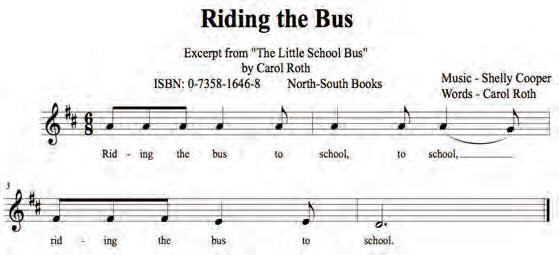
• Pass out cards with ordinal number words (e.g., first, second, third, etc.) to various students.
• Have them put the words in order on the white board
• Introduce cards with the animal pictures that correspond with the book (e.g., pig, goat, etc.). Challenge students to put the animals in sequential order of their appearance in the book.

• Introduce cards with the words that rhyme with each animal (e.g., “coat” for “goat”). Have students match each rhyme with the corresponding animal.
• Read/Sing through the cards on the whiteboard:
o first is a goat in a coat
o second is a pig in a wig
o third is a fox wearing socks
o fourth is a chick who is so quick
o fifth is a bear with lots of hair
o sixth is worm who starts to squirm
o seventh is a sheep who likes to sleep
• Transfer the scale pattern to tone bells, stair-step bells, and/or other barred instruments
**Note: Sing the first card series on “do,” second card series on “re,” etc. (see figure below). Finish the scale by singing “they are” on high “do” before singing the “Riding the Bus” melody for the last time.
References:
Cooper, S. (January 2010). “Lighting Up the Brain with Songs and Stories.” General Music Today, 23 (2), 24-30.
Cunningham, P.M., Moore, A.M., Cunningham, J.M. & Moore, D.W. (1989). Reading in elementary classrooms: Strategies and observations. White Plains, NY; Longman.
Hardiman, M. M. “Mariale Hardiman's Brain-Targeted Teaching Model” Retrieved from http://www.braintargetedteaching.org/index.cfm

Kodiak, E. (March 2013). “Teaching Literacy is Teaching Music!” Early Childhood Music & Movement Association (ECMMA). Retrieved from http://www.ecmma.org/blog/movement_matters/ teaching_literacy_is_teaching_music
Pfaff, L. G. (2008, July). “I love storytime.” Parents, 123-124.
Trollinger, V. L. (2010). “The Brain in Singing and Language.” General Music Today, 23, 20-23.
Dr. Shelly Cooper is Professor of Music Education at the University of Arizona where she teaches undergraduate and graduate music education courses. Cooper also teachers Kodály certification courses at Arizona State University and the University of New Mexico. Cooper is the editor of General Music Today and the Book/Media Review Editor for the Journal of Historical Research in Music Education.
ala breve 53
Orchestra as a Vehicle for Social Change: Providing Opportunities and Teaching Perseverance
By Rebecca MacLeod
Editor’s Note: This article appears as one of a series written especially for Ala Breve by experts in the field of music education.
There are few things more beautiful than watching a child receive his or her first opportunity to play an instrument. Today at my lab school, the fourth grade orchestra students came to the orchestra cottage for their first lesson. At the start of the lesson, I told them, “Today, you will meet your violin.” The looks of anticipation, excitement, and joy were contagious as students opened their cases for the first time. One student exclaimed, “My violin is so beautiful!”
Unfortunately for the majority of students in the United States, they will never have the opportunity to meet their first instrument. Orchestra programs are offered in fewer than 20% of public schools in the United States (Hamann, Gillespie, & Bergonzi, 2002) and the majority of these programs are located in affluent schools (Elpus & Abril, 2011). Because opportunities to learn to play a string instrument in the public schools are limited, access to string instruction is not equitable. Schools located in less affluent areas have fewer resources, directly affecting the type of opportunities offered to the students in attendance (Ladson-Billings, 2006; Costa-Giomi & Chappell, 2007; Kozol, 2005). If music education is truly for all children, then changes need to be made that encourage teachers to work with underserved populations in every area of music education.
Working successfully with underserved populations requires increased awareness of a number of variables, primarily the impact of lower income, fewer resources, English as a second language, and single parent homes. Families with lower incomes tend to be more transient and students frequently move from one school district to another. Frequent relocation impacts student attendance and parental involvement. The characteristics listed above are also common characteristics for students who are considered “at risk.” At-risk students are any students who, on the basis of a variety of risk factors, are unlikely to graduate from high school and unlikely to become contributing members of society (Slavin, 1989; Taylor, Barry, & Walls, 1997). At-risk is defined by the following risk factors: low socio-economic status, single parent homes, overage for current peer group, poor attendance, little parental involvement, and educational minority (Kaufman, Bradbury, & Owings, 1992; Shaklee & Biedler, 1992). All classrooms and populations of students include students who are at-risk (Metz, 1993). However, the number of students who experience one or more of these risk factors is higher in lower income families (Kominski, Jamieson, & Martinez, 2001). This reality presents additional challenges for both students and teachers that must be overcome.
When working with students who are potentially at-risk, emphasizing the connection between hard work and success is essential. One common characteristic of at-risk students is an inappropriate association between cause and effect relationships. Internal locus of control, or the belief that one has control over the events in one’s own life, is an important factor in developing perseverance skills and independence. As teachers we want our students to understand the following associations: when you do good things, good things happen to you; and when you do bad things, bad things happen to you (Madsen & Madsen, 1998). For example, if I study, I will get a good grade. However, this relationship is not well established in a young person’s life when cause and effect events are unstructured and seemingly random. For instance, my mom worked hard, but we were evicted from our apartment anyway and now we have nowhere to live. Or, I behaved in class, worked hard, was respectful of my teachers, but was punished at home by an abusive guardian. Establishing the correct associations between work and reward allows students to become independent and successful. If I study, I will get a good grade. If I practice, I will play the violin better. Students, with an external locus of control, those who feel that they do not have control over their life events, may give up easily in the face of a challenge. It is our job as educators to encourage perseverance in all of our students, even those who seem to lack motivation.
Orchestra is one context through which the correct associations of cause and effect can be taught. Systematic practice generally produces a tangible positive result in the performance of the student that both teacher and student can observe. When instruction is sequenced well, the relationship between practicing/rehearsing a passage can be heard and felt almost immediately. In a beginning lesson context, improvements in performance can occur over a short period of time. Achieving small target goals accompanied with positive reinforcement assists the students in realizing how quickly they are capable of improvement. Once students realize that focusing their attention, practicing (or working), and persevering on a given task all relate to progress, they begin to realize that they have some control over their own accomplishments. As a university professor who trains undergraduate music education students to be orchestra teachers, I decided to embark on a journey to increase access to string instruction to students regardless of socio-economic status. To that end, I collaborated with an area elementary school, our local symphony orchestra, and the university to create an elementary string program
in a Title I school. The following is an account of the experiences that the elementary students had during the first year of the partnership. The primary goal of the project was to provide instrumental music instruction to underserved students, who otherwise may not ever be exposed to a string instrument. The secondary goal was to improve the elementary students’ awareness of the impact of consistent work on their own achievement.
The Beginning String Program
Interested fourth grade students enrolled at an area Title I school were presented with a permission slip to take home to their guardian and instructed that if they wished to participate in the orchestra program, the permission slip must be returned to the principal by the end of the first week of school. During the first year of the program, fourteen students completed this task successfully and were enrolled in the orchestra program. The orchestra class included eleven violinists, one violist, and two cellists. The instrumentation decision was made based on the size and type of instruments that had been donated for the project.
The class met twice a weekly, for 40 minutes each meeting, during the school day for an entire school year. For their personal safety and to mitigate loss, left, or damage, students were not permitted to take the instruments home to practice for safety reasons. Therefore, all instruction and practice was completed within the class period. Students received a total of 60 group lessons over the course of the school year. Although one of the goals of the project was to help students associate hard work with success, we did not explicitly share that goal with the students. Rather, we consciously designed our instruction to include clear target goals, small sequential steps towards each goal, with positive reinforcement occurring immediately when progress was made (Duke, 2009). We also structured simple perseverance tasks for the students. For example, students were instructed to practice one to two measures of music without the teacher’s assistance, and were initially given two minutes of in-class time to work on achieving the identified goal. Students were then rewarded for working towards the goal consistently during the two minutes without giving up, rather than being rewarded for accomplishing the goal itself. We hoped that this would teach the students to work towards a goal even if they were not immediately successful.
Fourth Grade Student Reflections
The following are excerpts from letters that the
54 October/November 2014
fourth grade students wrote to me at the end of the year. The students were instructed to write a one-page letter that included whether they believed orchestra was important, why orchestra was important (if in fact they thought it was), and whether they should be permitted to have orchestra again during the fifth grade. To preserve anonymity, student names are not included. I did not edit the spelling or grammar of these excerpts to allow the children to have their own voice. Many of the students’ writings were impacted by the fact that English is their second language.
Without prompting, a number of the fourth grade students indicated that they learned to work hard through participation in orchestra. For example, one student wrote, “Orchestra class is important because it gives students an opportunity to play an instrument. Playing a violin made me more determined to work hard.” Another student expressed that learning to play string instruments was challenging and required determination:
I learned this year in orchestra that it is hard to play cello when I first started I thought it was going to be easy to play. So now I have more ideas what am I going to be when I grow up. I hope to be a orchestra teacher [sic].
Currently, string teachers and string students in the United States are predominantly white (Gillespie & Hamann, 1998), while black and Latino students are under represented in school orchestra programs (DeLorenzo, 2012; Elpus & Abril, 2011). One way for real change to occur in music teaching is through increasing the diversity of the members in our profession. If students are never given the opportunity to learn to play a string instrument, it stands to reason that they will not become orchestra teachers. Increasing access to string instruction is essential in moving our profession forward.
Many of the elementary students wrote that, orchestra made them feel special, important, or proud. “It help [sic] me understand to keep going and at the end I will be good. It made me feel good about my slaf [sic]. It help [sic] to play as a team. It Made me feel important.” Another student shared, “Orchestra class helped me feel proud of myself and my work. I know [sic] have a better appreciation of music. Learning to play a musical instrument and performing made the 4th grade the best.” Improved self-esteem, confidence in their own ability, and the understanding of the cause and effect relationships between work and success are all characteristics that we hope to instill in our students.
Many of the students shared wonderful perspectives regarding orchestra and its role in their lives, but two letters spoke to me on a deeper level, changing my philosophy as a teacher. One student shared that, “I think orchestra is important to me. I think orchestra is fun. It safe for us [sic]”. The realization that my students’ lives
were possibly unsafe and that orchestra was a potential haven, created a shift in priorities for my classroom. Creating an environment that supported the development of the whole child became a central goal for everyone involved in the program, while the ability of my students to perform at a high level became secondary. The second quote, “[Orchestra] makes you think harder. Learn to play as a group. I made me feel special,” provoked a number of conversations with my university students. The final sentence, “I made me feel special,” may have had one of two meanings. It is either a misspelling, “It made me feel special,” or she truly meant, “I made me feel special.” In other words, I am proud of myself. The teachers who worked with this student felt that she intended the second meaning.
Conclusions
The Peck Elementary String Program is now entering its sixth year. The program has grown from 14 students to include over 150 elementary students in grades 2 through 5. There are approximately 240 students enrolled in the elementary school grades 2 through 5, which means that over half of the school’s student population has elected to participate in orchestra. Parent and student enthusiasm relative to participating in orchestra has prompted the local middle school to add an orchestra program. Reflections from the Peck Elementary String students reveal that orchestra is important to them, that they feel proud of themselves, and that they value hard work.
Orchestra may be one vehicle to promote social change, teach discipline and perseverance, as well as enrich the lives of all students. In order for our students to reach their full potential, we must teach them that they have control over the events in their lives, at least those that occur in our presence. Establishing clear and achievable target goals, sequencing instruction so that students are successful the majority of the time, and structuring perseverance activities where the students are rewarded regularly for effort, are all strategies that can increase student self-esteem and belief in their own abilities. Finally, introducing brief moments of failure that require the students to struggle in a structured environment, can teach them how to overcome obstacles that will surely occur in their future. Students who fail constantly will invariably give up; while those who fail occasionally and are provided with a safe opportunity to try again, will develop the life skills necessary to succeed.
References
Costa-Giomi, E. & Chappell, E. (2007). Characteristics of Band Programs in a Large Urban School Districts: Diversity or Inequality? Journal of Band Research, 42(2), 1–18.
DeLorenzo, L. C. (2012). Missing faces from the orchestra: An issue of social justice? Music Educators Journal, 98, 39-46.

Elpus, K., & Abril, C. R. (2011). High school music ensemble students in the united states: A demographic profile. Journal of Research in Music Education, 59(2), 128-145.
Gillespie, R. A., & Hamann, D. L. (1998). The status of orchestra programs in the public schools. Journal of Research in Music Education, 46(1), 75-86.
Hamann, D. L., Gillespie, R. A., & Bergonzi, L. (2002). Status of orchestra programs in the public schools. Journal of String Research, 2.
Kaufman, P., Bradbury, D., & Owings, J. (1992). Characteristics of At-risk Students in National Education Longitudinal Study of 1988. (National Center for Educational Statistics. No. 92-042). U.S. Department of Education Office of Research and Improvement.
Kominski, R., Jamieson, A., & Martinez, G. (2001, June). At-risk conditions of U. S. school-age children. Retrieved September 14, 2014, from https://www.census.gov/population/www/documentatio n/twps0052/twps0052.html
Kozol, J. (2005). The shame of the nation: The restoration of apartheid schooling in American. New York: Three Rivers Press.
Ladson-Billings, G. (2006). From the achievement gap to education debt: Understanding achievement in U.S. schools. Educational Researcher, 35, 3-12.
Madsen, C. K., & Madsen, C. H., Jr. (1998). Teaching/Discipline. Raleigh, NC: Contemporary Publishing.
Metz, E. D. (1993). The camouflaged at-risk student: White and wealthy. Momentum, 24(2), 404.
Slavin, R. E. (1989). Students at risk of school failure: The problem and its dimensions. In R. E. Slavin, N. Karweit, L., & N. Madden, A. (Eds.), Effective programs for students at risk (pp. 3-20). Boston, MA: Allyn and Bacon.
Taylor, J. A., Barry, N. H., & Walls, K. C. (1997). Music and students at-risk: Creative solutions for a national dilemma. Reston, VA: Music Educators National Conference.
Shaklee, B. D., & Biedler, F. M. (1992). Changing Atrisk Settings for At-promise Students. General Music Today, 6(2), 5-7.
Dr. Rebecca MacLeod is associate professor of music education at the University of North Carolina at Greensboro, specializing in string education. She earned her degrees from Duquesne University (BSME) and Florida State University (MME and PhD). She is a frequent guest conductor and clinician throughout the United Sates.

ala breve 55
Mark Foster, Jazz Chair
By now, hopefully, everyone is working with their students on the all state jazz band audition music. Students need to record their CDs and submit them to their directors in time for the directors to mail them to me by November 7th. Directors should check each student recording to make sure the cd plays correctly. There should be no writing on the cd, only the case or sleeve. Remember that there is a $15.00 audition fee for each student and a $20.00 school fee for each school. Recordings submitted without these funds will not be adjudicated. Checks should be included with the package of recordings. Please encourage your students to purchase the books with the audition materials. These books contain many great resources in addition to the audition music, and they will be able to use them for many years as they progress through their musical studies.
I'm very excited about our clinicians this year. Dr. Tom Walsh, director of jazz studies at the Indiana University will be leading the Gold Jazz Band. Dr. Bob Lark, director of jazz studies at DePaul University in Chicago will be leading the Silver Jazz Band. Mrs. Sallie Vines White, director of jazz studies at Hoover High School in

Birmingham will be directing the middle school jazz band. All three of these clinicians bring years of professional teaching and performing experience, and I am confident that they will provide an exceptional all state experience for all of our students. Please make plans to attend the concert this year on January 24th at AMEA.

Everywhere I have taught, students have wanted to play jazz. Even students who don't play "jazz instruments" want to play jazz. I think we owe it to our students to provide the opportunity for all students to play in jazz ensemble regardless of the instrument they play. My Jr. High jazz band has all the standard jazz instruments plus a flute, four clarinets, a horn, a baritone, and three tubas. It is really cool when we do improv work and the horn player stands up to solo. Many modern published charts include parts for non standard jazz instruments (flute, clarinet, horn, and tuba) which make them playable for virtually any group of students. There are also many modern charts that are playable with bands with less than full instrumentation. These charts are great and they open up the jazz experience for all students. Where we run into difficulty, however, is with the older charts in our libraries which are great, but are usually only written for the standard big band instrumentation. I have been working for several years to create parts for flute, clarinet, horn, tuba, and vibraphone for all these charts. This is time
CALL FOR RESEARCH ABSTRACTS
The Alabama Music Educators Association, Higher Education Division invites research poster submissions from all levels of music scholars and practitioners. Submissions may include completed and in-progress research studies involving any aspect of music (education, therapy, history, psychology, performance, music in higher education, etc.). Research based on issues facing music educators, musicians, and music students in the Southeastern United States are especially welcome, though this is not a requirement. All submissions should meet the Code of Ethics found in the Journal of Research in Music Education. Research presented at other conferences will be considered. However, previously published work will not be accepted.
Conference Days and Location. The AMEA conference will be Thursday, January 22, 2015 through Saturday, January 24, 2015 at the Renaissance Montgomery Hotel and Convention Center in Montgomery, Alabama. See http://www.alabamamea.org for more information.
consuming, and it is a multi-year project, but It is important because there are lots of great charts out there that all kids need to know which may not have parts available for their instrument. I encourage you to start a group, and invite everyone. You will be pleasantly surprised how much the kids will enjoy it, and how much more they will enjoy playing their instruments.
Students need to know tunes. One way to accomplish this is to start with a simple book. Volume 54 (Maiden Voyage) in the Aebersold series is an excellent way for your students to learn several easy and fun charts. I try to encourage my students to have about 5-10 songs that they can play from memory. These are great for this because the harmonic and melodic structure of the charts is simple, and the improv is easy which is great for building confidence. Have fun and play more jazz...
Poster Session Day and Time. Thursday, January 22, 2015 from 1:00 p.m. to 3:00 p.m.

Proposal Submission. Interested researchers should submit a detailed abstract of the research project (up to 1000 words) as a Word or PDF document through our online submission website:http://amea-research.org.
Deadline. Submissions must be received by 11:59 p.m. CST on Friday, November 14, 2014 for full consideration
Process for Review & Notification. All abstracts will be peerrevised and authors will be notified of acceptance by Friday, December 6, 2013. When accepted, at least one of the authors must register and attend the AMEA Conference to present the poster.
Poster Dimensions. Posters should be professional in appearance and have poster dimensions of dimensions no larger than 36 inches X 48 inches. Presenters are expected to bring 20-30 copies of their research abstract to the session.




More Information. Contact Dr. Jane Kuehne at Auburn University by phone at (334) 844-6852 or by email at kuehnjm@auburn.edu.

56 October/November 2014
Jane Kuehne, Research Chair
Audition
UNIVERSITY OF SOUTH ALABAMA DEPARTMENT OF MUSIC
DEGREES:

S Dates: aturday, November 8, 2














Saturday, November 8, 2014

Saturda , 14 y
BM with Concentration in Music Education (Instrumental and Vocal)

MM with Concentration in Music Education (Instrumental and




Saturday, February 14, 2015
Saturday, March 14, 2015












































Saturday March 14
Saturday, April 4, 2015
014 , 201 5 , 201 5 , 4
BM with Concentration in Performance (Instrumental and Vocal)
Additional Dates Available b
, 201 5 y

MM with Concentration in Music Performance (Piano and Vocal)
Additional Dates Available by Request
BM with Concentration in Elective Studies (Business or Specific Outside Fields)



MM with Concentration in Collaborative Keyboard
The University of South Alabama Department of Music, through its innovative curriculum, empowers professional musicians, music educators, and those who wish to enrich their lives through the arts. The Department serves the needs of the University to promote general education and to provide a vital cultural link to the great state of Alabama and to the Gulf Coast region. Its excellent facilities and faculty, promotion of technology, and dedication to life-long learning provide a wide spectrum of experiences for both the student and the community.

INSTRUMENTAL ENSEMBLES
Wind Ensemble
Symphony Band
Symphony Orchestra
String Ensemble
Jaguar Marching Band


Jaguar Pep Band
Jazz Ensemble
VOCAL ENSEMBLES University Chorale

USA Opera Theatre


USA Concert Choir
ENSEMBLES
CHAMBER ENSEMBLES







Trumpet Ensemble
Trombone Ensemble
Tuba Euphonium Ensemble
Chamber Brass Ensembles
Chamber Woodwind Ensembles
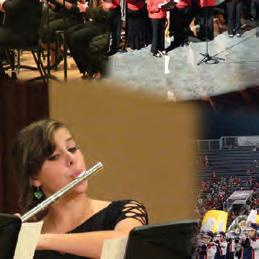
University of South Alabama, Department of Music




Percussion Ensemble

USA Steel Band

USA World Music Ensemble


Piano Ensemble
Guitar Ensemble
Laidlaw Performing Arts Center, Room 1072, 5751 USA Drive South, Mobile, AL 36688


The Music Starts Here
AMEADivision Events 2014 - 2015
Alabama Bandmasters Association
AMEA In-Service Conference/All-State Jazz Band
January 22-24, 2015 - Renaissance Montgomery Hotel at the Convention Center
All-State Solo Festival April 15, 2015 - Location TBA
All-State Band Festival
April 16-18, 2015 - Mobile Convention Center Summer In-Service Conference June 23-25, 2015 -
58 October/November 2014
Hampton Inn and Suites, Orange Beach
District I District Fall Meeting August 25, 2014 Location TBA All-State Band Auditions January 30-31, 2015 Sparkman HS District Honor Band February 13-14, 2014 Bob Jones HS State MPA I February 26-27, 2015 Location TBA State MPA II March 12-13, 2015 James Clemons HS Solo and Ensemble Festival April 11, 2015 Location TBA Solo and Ensemble Festival May 2, 2015 Location TBA District II District Fall Meeting August 19, 2014 Gadsden City HS All-State Band Auditions January 17, 2015 Albertville HS State MPA February 25-27, 2015 Gadsden City HS District Honor Band March 6-7, 2015 Albertville HS Solo and Ensemble Festival April 20, 2015 Arab HS Solo and Ensemble Festival May 4, 2015 Oxford HS District III District Fall Meeting August 2, 2014 Smith Lake All-State Band Auditions January 31, 2015 Muscle Shoals HS District Honor Band February 20-21, 2015 Russellville HS State MPA March 3-5, 2015 University of North Alabama Solo and Ensemble Festival May 2, 2015 University of North Alabama District IV District Fall Meeting September 15, 2014 Hoover HS All-State Band Auditions January 31, 2015 Gardendale HS State MPA (High School) March 3-5, 2015 Homewood HS State MPA (Middle School) March 10-12, 2015 Hewitt-Trussville HS District Honor Band March 20-21, 2015 Homewood HS Solo and Ensemble Festival April 21, 2015 Homewood MS Solo and Ensemble Festival May 2, 2015 Bumpus MS District Spring Meeting May 18, 2015 Location TBA District V District Fall Meeting August 25, 2015 Location TBA All-State Band Auditions January 31, 2015 Location TBA District Honor Band February 20-21, 2015 University of West Alabama District Spring Meeting February 21, 2015 University of West Alabama State MPA February 26-27, 2015 University of Alabama Solo and Ensemble Festival March 26, 2015 Prattville HS Solo and Ensemble Festival April 21, 2015 Tuscaloosa County HS District VI All-State Band Auditions January 31, 2015 Opelika MS District Honor Band February 21-22, 2015 Auburn HS State MPA March 9-11, 2015 Opelika HS Solo and Ensemble Festival April 11, 2015 Auburn JHS Solo and Ensemble Festival May 2, 2015 Trinity Presbyterian School District Spring Meeting May 11, 2015 Location TBA District VII District Fall Meeting August 25, 2014 Location TBA All-State Band Auditions January 17, 2015 Davidson HS State MPA March 4-6, 2015 Baker HS Solo and Ensemble Festival April 25, 2015 East Site - Location TBA Solo and Ensemble Festival May 2, 2015 West Site - Faith Academy District Spring Meeting May 4, 2015 Location TBA District VIII District Fall Meeting August 18, 2014 TBA All-State Band Auditions January 17, 2015 Troy Elementary School State MPA March 9-12, 2015 Enterprise HS District Honor Band March 13-14, 2015 Enterprise HS District Spring Meeting March 14, 2015 Enterprise HS Solo and Ensemble Festival May 2, 2015 Troy Elementary School Solo and Ensemble Festival May 9, 2015 Excel HS
Alabama Vocal Association
Elementary/General Division
October 3, 2014 Elementary Music Festival, Samford University, Dr. Michele Champion and Mr. Ken Berg
October 4, 2014 AMEA/ AOSA Fall Workshop, Gwin Elementary School Dr. Michele Champion and Mr. Ken Berg
October 26-29, 2014 NAfME National In-service Conference, Nashville, TN
November 5-8, 2014 AOSA Professional Development Conference, Nashville, TN
January 22-24 AMEA In-Service Conference, Renaissance Montgomery Hotel and Convention Center
AMEA Collegiate Division
October 11 - Collegiate Summit - University of Montevallo
January 22 - 24, 2015 AMEA Conference, Renaissance Montgomery Hotel and Convention Center
Alabama Orchestra Association
All State Audition excerpts posted online - August 11, 2014
All State Audition Registration Deadline - September 30, 2014 Composition Contest Deadline - October 1, 2014
All State Results Posted online - November 17, 2014
All-State Scholarship Application Deadline - December 1, 2014
All-State Festival - February 12-15, 2015
ala breve 59
All events are open to all members, with the exception of OCS/OA/ME - adjudications must be completed within the district in which the school resides. Event Date Location All State Show Choir Audition 10/9 – 10/11 Gardendale-Mt. Vernon UMC, Gardendale All State Show Choir 1/22 – 1/24 Renaissance Montgomery All State Choir Auditions 11/13 Mt. Zion Baptist Church, Alexandria 11/14 and 11/15 Gardendale-Mt. Vernon UMC, Gardendale 11/17 Spring Hill Baptist Church, Mobile 11/18 St. James School, Montgomery 11/19 Florence HS, Florence 11/20 and 11/21 Willowbrook Baptist Church, Huntsville All State Choir 4/8 – 4/11 Samford University SCPA 2/23 and 2/24 Moody Building, UA, Tuscaloosa 2/23 and 2/24 and 2/25 Bluff Park, UMC, Birmingham 3/10 Southside Baptist, Decatur 3/11 University of North Alabama, Florence 3/13 FBC, Tallassee 3/16 and 3/17 James Clemens HS, Madison 3/19 Spring Hill Baptist, Mobile Solo and Ensemble 11/21 Spring Hill Baptist, Mobile 2/19 Jacksonville State, Jacksonville 2/23 and 2/24 Moody Building, UA, Tuscaloosa 3/7 Gardendale HS, Gardendale 3/11 University of North Alabama, Florence 3/13 FBC, Tallassee 3/19 Spring Hill Baptist, Mobile 4/20 and 4/21 Willowbrook Baptist, Huntsville OCS/OA/ME District I - 11/4 Florence HS, Florence District II – 11/20 Paul Bryant HS, Tuscaloosa District III – 11/3 Gardendale HS, Gardendale District IV – 11/20 Alexandria HS, Alexandria District V – 11/3 Randolph School, Huntsville District VI – 10/29 Tallassee HS, Tallassee District VII – 12/1 UMS-Wright Preparatory School, Mobile





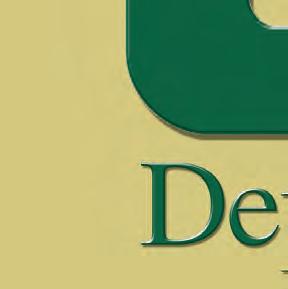
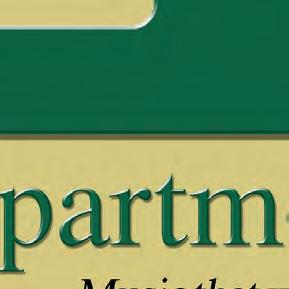



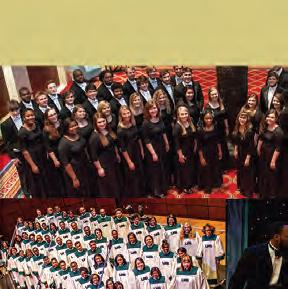





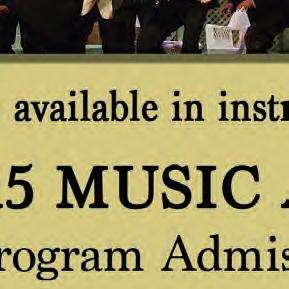




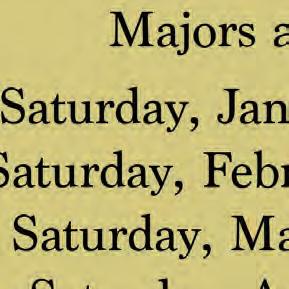
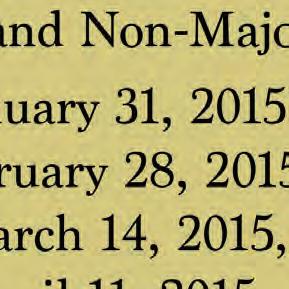






 Frank Buck, AMEA Historian
Frank Buck, AMEA Historian

Capturing Our History: What You Can Do to Help
During his third season at Notre Dame, Lou Holtz looked back over his tenure and remarked, “We’re not where we want to be. We’re not where we ought to be. But, thank God, we’re not where we used to be.” Notre Dame went on to win a national championship that year. Holtz’s sentiment characterizes the progress we have made in assembling the history of our organization.
AMEA members do good things on a daily basis. In our haste to move forward, we tend to forget the good things we have done, capture them, and preserve them in a way that their memories will inspire future generations. In this article, you will read about recent work. You will read some thoughts about what could be ahead. Most importantly, you will see a way in which you can --contribute.
Past Presidents, Hall of Fame, and Award Winners
In each issue of Ala Breve, a list of AMEA Past Presidents appears. Depending on our ages, many of those names serve as a reminder of the wonderful people we know, or knew, personally. We tell stories of hallmark performances by their groups or the wisdom they imparted. As years turn to decades, written records begin to serve as the primary way to preserve that history.
On the AMEA website (alabamamea.org), look for the “Past Presidents” link. Every single one is pictured with a short bio. A plan is in place to review those bios for needed changes as the years go by and update the page as new leaders take the helm.

Likewise, the AMEA website features pictures and bios of all Hall of Fame members. Whereas that site had previously featured only the pictures, we added bios this past year. As with the Past Presidents, a plan is in place to add pictures and bios of the new inductees each year. With any project, keeping something up to date is always easier than trying to research back through the years.
Third, we have gathered together the names of award winners for the “Outstanding Music Educator,” “Outstanding Administrator,” “Barbara Odom Service Award,” and our newest award, the “Outstanding Young Music Educator.” Every year, the names of the new winners will be added to this list.
Sleepless Nights and Memories of State Contest
One colleague told me I was responsible for the hours of sleep he was losing, glued to a computer screen. What was the subject of the intrigue? Band contest programs…programs from the ABA State Contest dating back to 1950. Each little nugget of history captured the names of directors, the selections they played, and the ratings they received.
Until now, those programs lived in garages of people who had carefully copied ratings off the wall posters decades ago. Today, they are all in one place—scanned and uploaded to a shared folder which you can access today. Go to the ABA section of the AMEA website and click the “MPA” link. On the next screen, you will see a link to the entire collection. If you find yourself not only scouring them well in to the night, and enjoying every minute of it, you will not be alone.
The project to collect the ABA programs and rating was on the front-burner because we already had a 35-year head start. As a 9th grader in 1974, I decided I wanted to be a band director, and it was that year that I got my first program, and for the first time carefully copied ratings from the charts on the wall into the program in my hands. It would be a process I would repeat every year.
This project has been far from a one-person job. Various people, each who had a few programs stored here or there began to come forward. With the help of such people as Bill Springer, Rush Gavin, Jerry Countryman, Orland Thomas, and Ron Sellers, we were able to plug many holes in the collection as we attempted to piece together the pre-1974 years. The holes are still not all filled, and probably will never be. But just when I thought everything that could be uncovered was uncovered, Lacey Powell found one of the few missing years in his garage—1953. The most recent addition came from our dear friend Truman Welch. Shortly after his death, grandsonin-law Scott Thompson sent me a collection of programs which included a program from 1949.
Could We Do the Same Thing for AVA?
When I emailed Carl Davis about beginning an effort to collect AVA festival programs from the past, his response was enthusiastic. If the help of additional people was important with the ABA project, it will be absolutely essential to replicate it for AVA. This is the part where I am asking choral directors to put down this magazine and start looking through files, boxes, garages, storage rooms, and attics. Send me what you have.
My mailing address is 531 Eagle Pointe Lane, Pell City, AL 35128 for hard copies you would like to send. (If you would like to keep the original, Xerox a copy to send. With the expected volume, and many other on-going projects, I would not be able to duplicate and return material.) My email is Frank@FrankBuck.org for anything you wish to scan and send.

If you are a college student, your contributions to AMEA don’t have to wait until you have diploma in hand. Several of our university libraries have copies of the Ala Breve in what is typically a “special collections” section. Ala Breve generally published these ratings. With the help of a cell phone camera, we can get those digitized.
What About All-State?
Much like our festival programs, a complete collection of All-State programs is nowhere to be found. Sure, I had collected quite a few from the 1980s and forward. Any possibility of trying to find programs from farther back seemed too remote to consider.
Earlier, I talked about the collection of programs Truman Welch had collected. Among them was virtually every All-State program from 1949 through 1969. I might add that they had been kept in chronological order. Because of Mr. Welch’s addition, the possibility to putting together a fairly complete collection now seems less daunting.
Again, look in your garages, storage rooms, and the like for that random program that you can mail or email to me. If you have AVA All-State programs, I need them; I don’t have a single one. If you have ABA All-State programs, email me to let me know what you have. I will respond with whether or not I am missing that one.
You Too Could Be an Author
The positive feedback following the release of the ABA programs and an Ala Breve article I wrote last spring has been appreciated. One phone call was from Dr. John M. Long. After reading the article, he called to follow-up on a bit of information about Walter Mason, AMEA President from 1948. Dr. Long suggested a book be written about Dr. Mason. While I would not begin to have the time to tackle a project of that magnitude, I think it opens an opportunity.
Alabama has had many music educators whose stories need to be told in an extended form. Alabama also has many students in high schools, colleges, and graduate programs who have papers to write and wonder what to write about. The opportunity to marry the one with the other is significant.
Dr. Bodie Hinton gave us a history of Alabama bands when he faced the task of a doctoral dissertation. William Dennison gave us the story of legendary band director Herman Moll. Beth Davis recently completed a dissertation on Dr. Ed Cleino’s life.
What works are out there now which chronicle the lives of some of our finest? What stories need to be told? Who do you know that could tell one of those stories and leave a lasting contribution to AMEA’s quest to remember its accomplishments? What could you do to get the process going?
ala breve 61
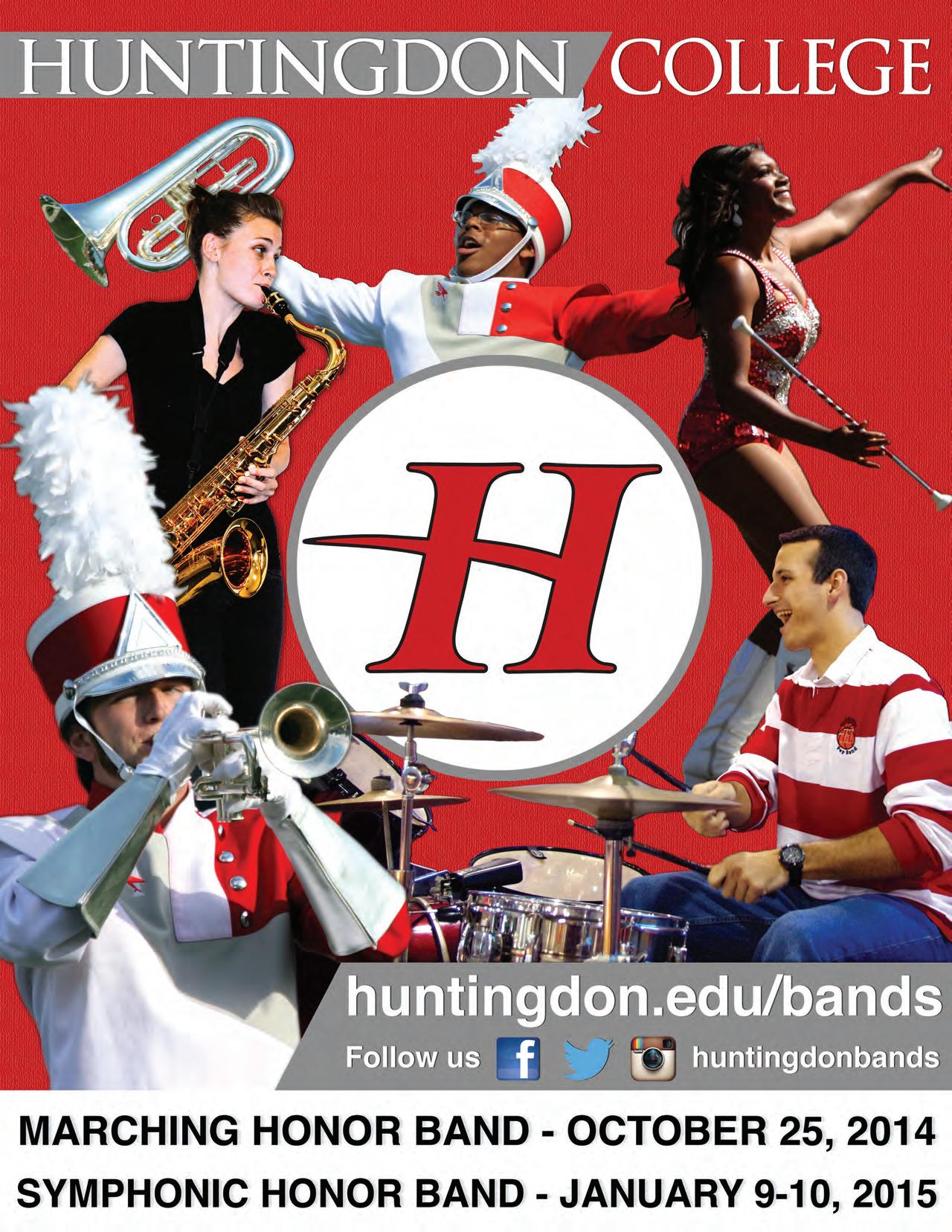














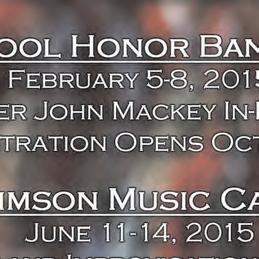



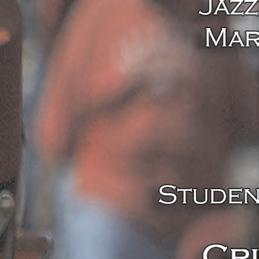















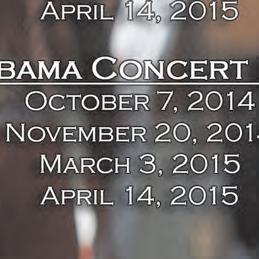


PRSRT STD US POSTAGE PAID Dothan, AL 36303 Permit No. 623































































































































































































































































































































































































































































 Frank Buck, AMEA Historian
Frank Buck, AMEA Historian







































